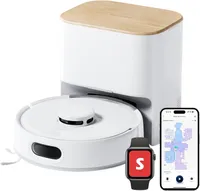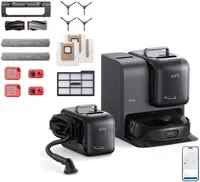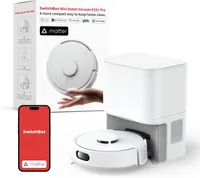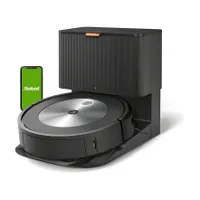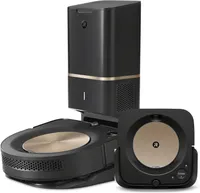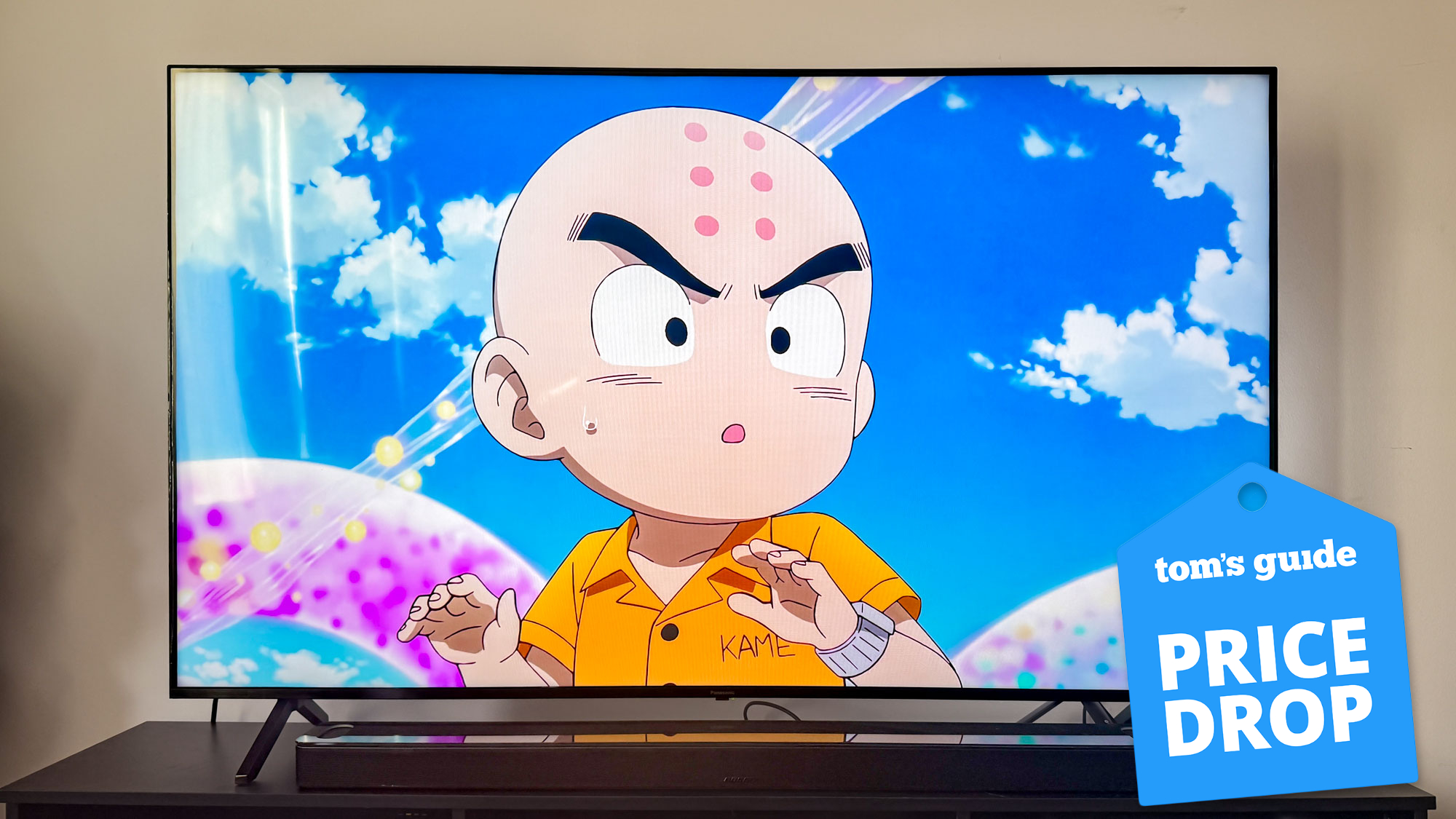Best robot vacuums in 2025: expert tested and rated
We’ve spent over 500 hours testing robot vacuums to find the best for every home, lifestyle and budget.
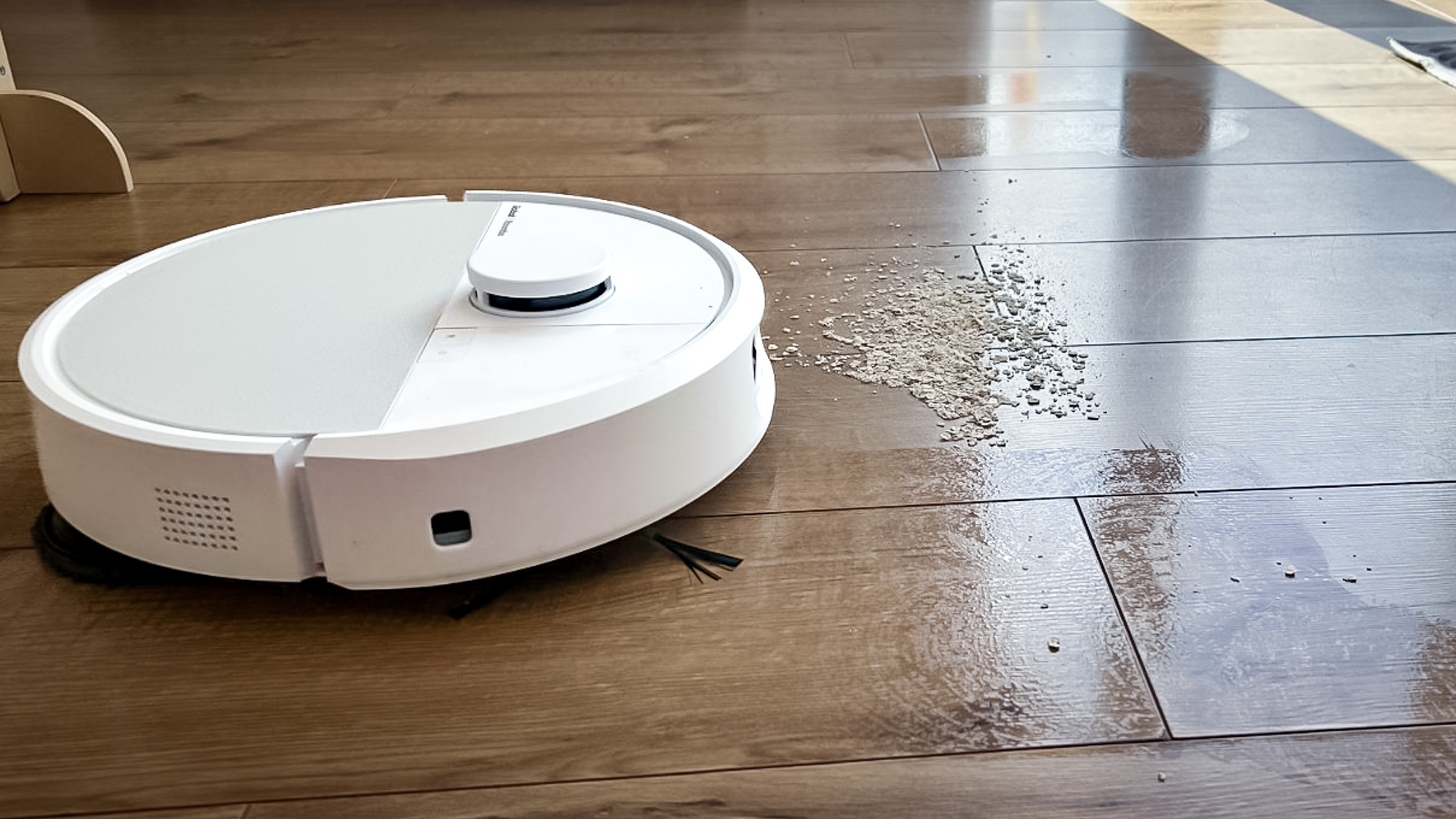
Keeping our floors clean and spotless can often be a back-breaking task. And if you really want to clean smart (without lifting a finger), the best robot vacuums can literally do all the hard work for you.
But in a market full of different models and specs, it can be a challenge knowing which one is best for your home, needs and budget. Do you need a robot vacuum for light, everyday cleaning? Or are you a pet parent and have a constant battle with furballs, dander and paw prints?
Our winning pick was the Shark PowerDetect 2-in-1 Robot Vacuum and Mop that impressed us with its overall cleaning scores on different floor types. Plus, we liked its superior mop powers to tackle stubborn stains. Or if after an affordable robot vacuum that is great for pet hair, we recommend the iRobot Roomba Plus 505 Combo for its solid performance, easily cleaning up after our tester's heavily shedding dog.
So if you want to find the right robot vacuum for you home, needs and budget, here are our top picks.
Earlier this year, iRobot issued a warning to investors that they could face closure within a year, in part due to high levels of debt. This came only a day after the company announced new Roomba robot vacuum cleaners. It's an uncertain time, but there are currently no signs that anything will change. However, since many features rely on the company's services and app, should these close, you may lose out on some of the device's functions.
The quick list
Here’s the best robot vacuums you can buy right now based on our testing. Read on for our full in-depth reviews.

The Shark PowerDetect 2-in-1 offers the best of everything. It intelligently mops and vacuums your floors for up to 30 days. Just set a schedule and the robot returns to its base to empty the dustbin, wash the mop, and refill the tank automatically.
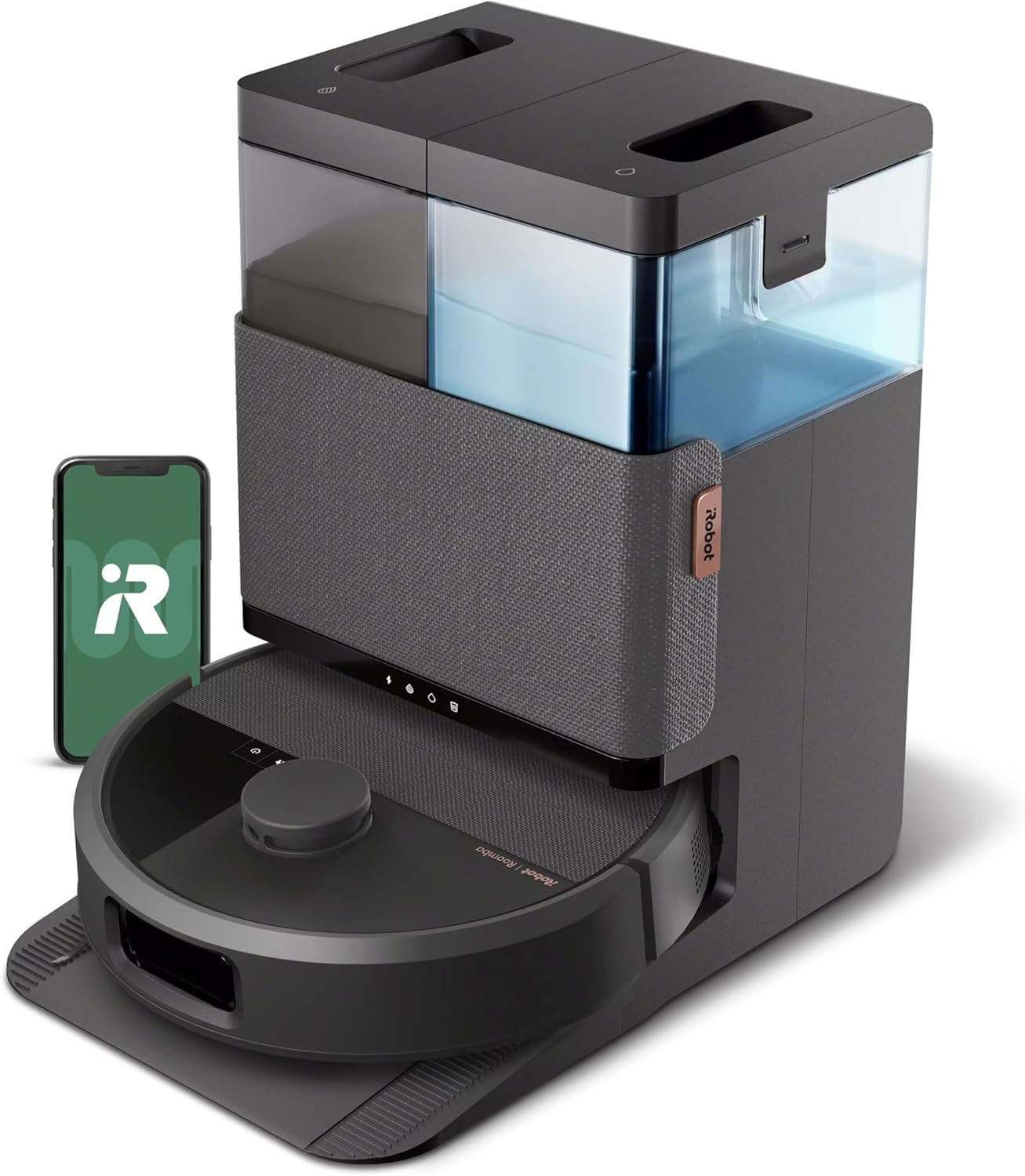
One of the newest Roombas of the range, the Plus 505 Combo is an impressive all-rounder. Not only does it excel in pet hair pick-up and grime, but its 70x-more, powered mop scrubs pet messes in no time. It also comes with AI-advanced features, a great app and can go up to 75 days of auto-emptying.
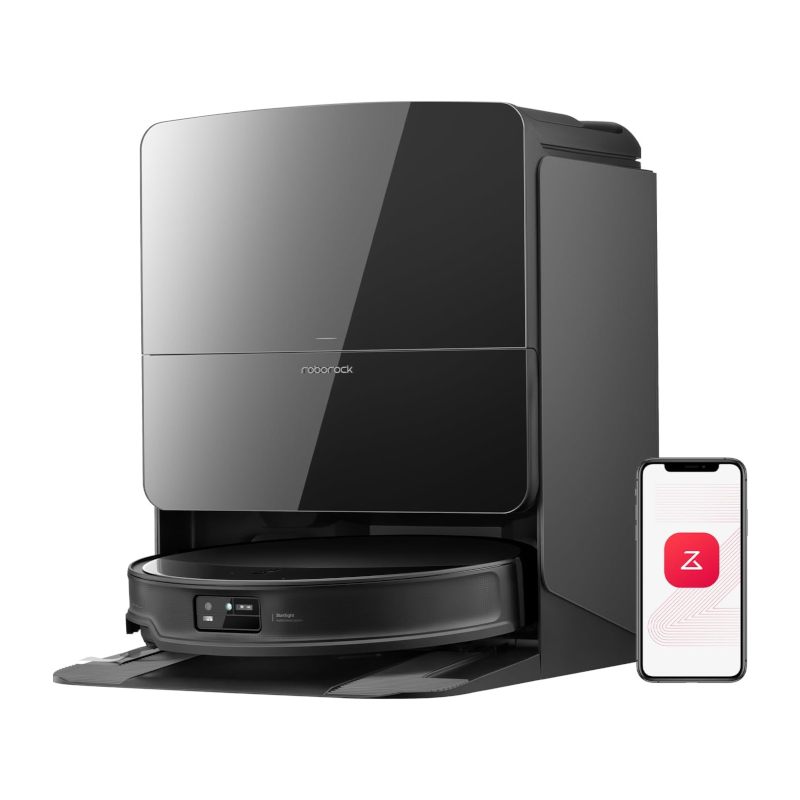
The Roborock Saros 10 r is a hybrid robot vacuum and mop that literally covers all bases. Its powerful suction exceeded our expectations, particularly for pet hair pick-up. It also comes with advanced features including a FlexiArm Riser Side Brush that can navigate over tall or awkward thresholds with ease.

If you want top performance at a budget price, the Tapo RV30 Max Plus offers excellent value. Great for both hardwood and carpets, it can handle your daily clean-ups, picks up smaller debris and navigates with ease.
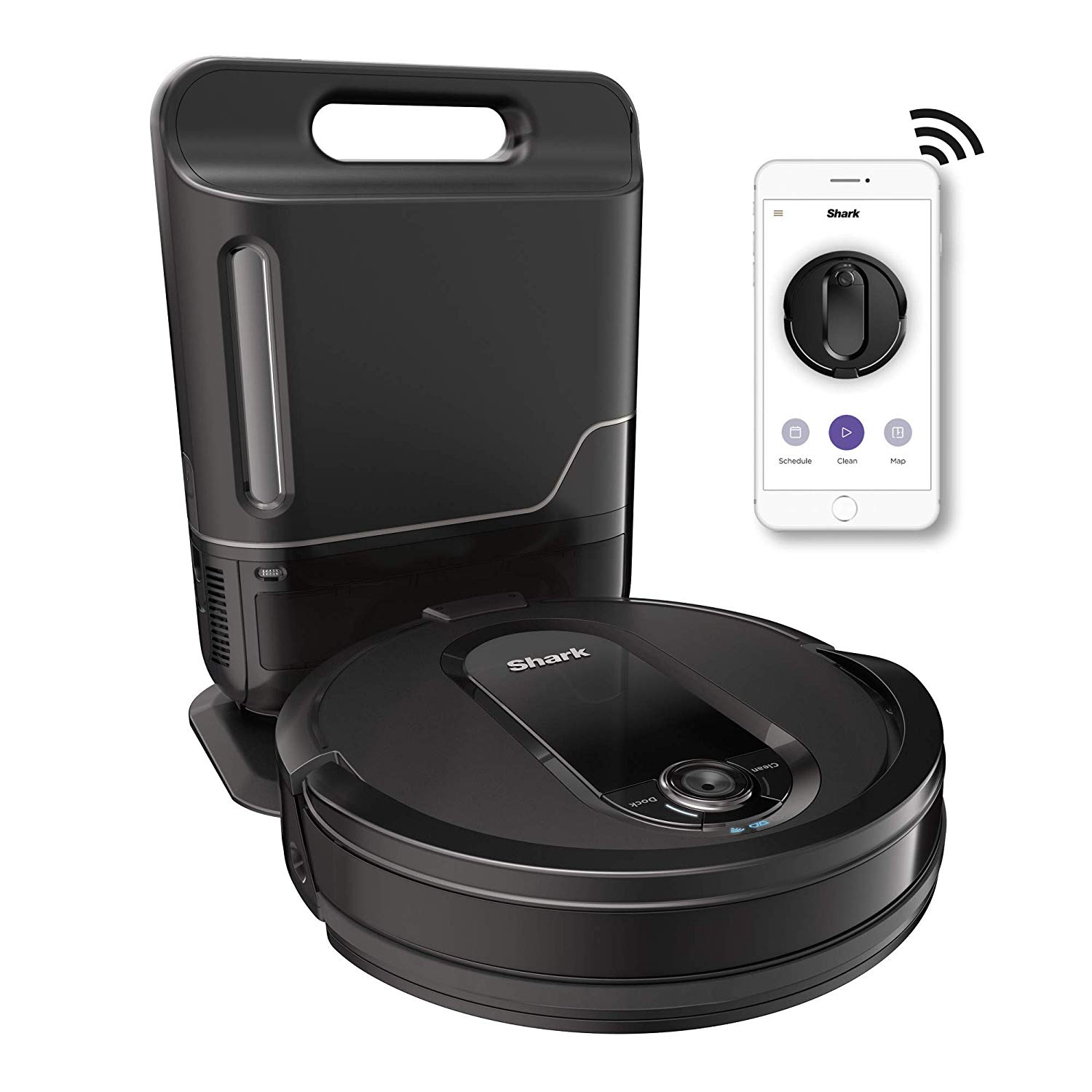
Shark's IQ robot vacuum is stacked with smarts and collects then deposits debris into its docking station after each cleaning session. This bagless base system holds over a month's worth of dirt. You can use its advanced scheduling feature to set and forget it until it's time to empty out the dock.
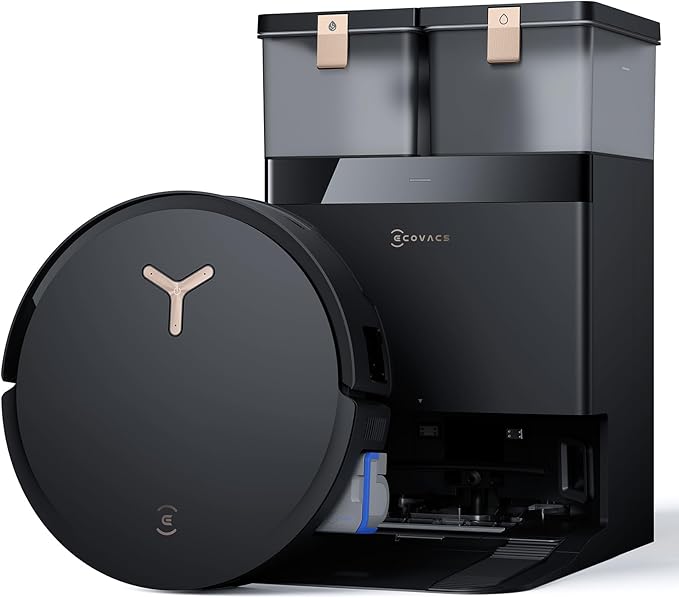
The Deebot X8 Pro Omni is a premium robot vacuum and mop, that gave a solid cleaning performance on both carpet and hard floors. In particular, it's stellar mop results were impressive, and left us with clean and spotless floors.
Meet our testers

As the Homes Content Editor for Tom's Guide, I have made it my mission for us all to have cleaner homes (and air!), without the fuss. I have a wealth of experience testing various appliances, and cleaning hacks. From finding the best vacuums and robot vacs, to wet and dry mops, I probably have one of the most spotless homes around.

With over a decade of experience writing and editing on various topics, including home improvement, personal finance, and pet ownership, I know the perils of cleaning pet hair. My work has been featured on BobVila.com, TIME Stamped, and more. In my spare time, you'll find me running, spending time with my kids and two dogs, and testing the latest smart gadgets.
The best robot vacuums you can buy
Why you can trust Tom's Guide
Best overall
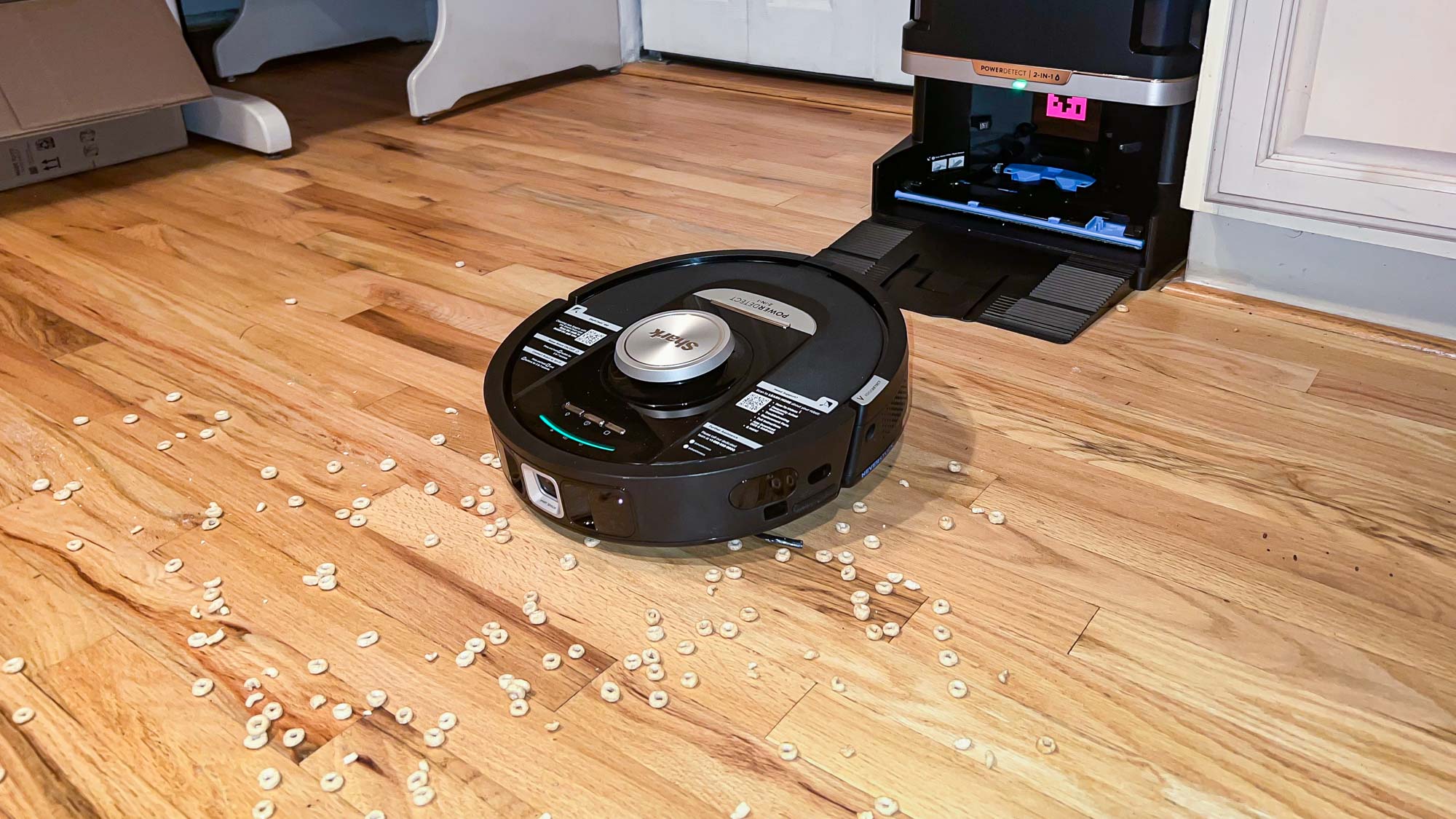
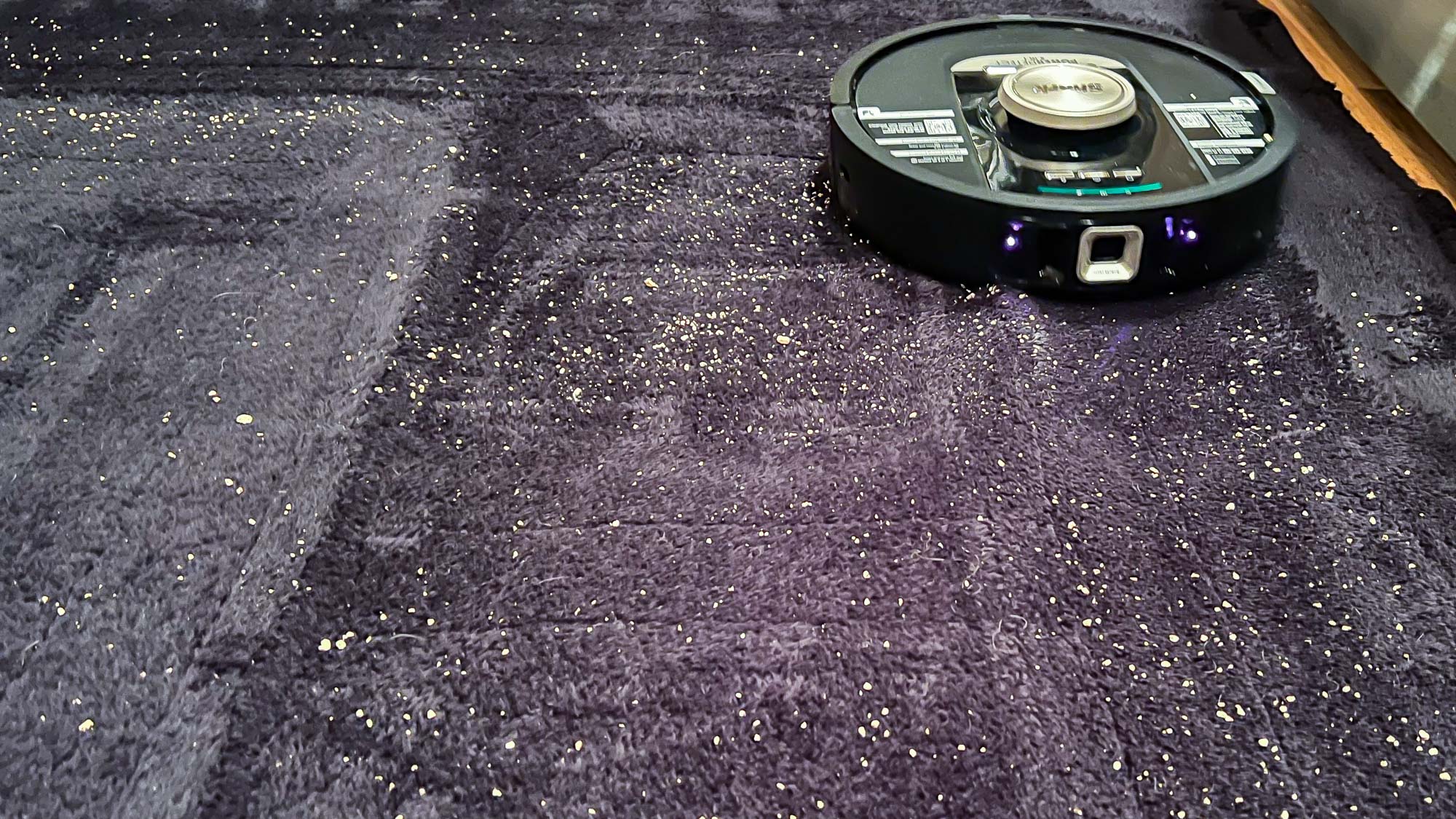


Specifications
Reasons to buy
Reasons to avoid
In October 2025, Shark announced its new PowerDetect ThermaCharged, an upgraded version of the PowerDetect with enhanced dock cleaning. We're currently working on bringing you a full review of this updated model.
We voted the Shark PowerDetect 2-in-1 robot vacuum and mop as the best robot vacuum for most people. This all-in-one floor cleaner automatically empties its dustbin, washes its mops, and refills its tanks—all for under $1,000. Even better, we liked its onboard AI to detect stains and scrub them harder, finding dirt to boost suction power for maximum performance.
When Hunter put it to the test in his home, he was impressed at how easy it was to use and tackle all sorts of debris, including Cheerios and kitty litter. The LiDAR turret quickly scanned his home's main floor plan in a single passthrough. And Shark's app was put to good use when name rooms, setting no-go zones. He was able to send the robot out to spot-clean a 5x5 area just by dropping a pin on the map.
The PowerDetect even offers more than the pricier competition with an ActiveLift leg. This helped it crawl over (almost) every obstacle, including sneakers and dog toys. But struggled with a thin 6-foot USB-C cord draped from our living room wall outlet to Hunter's couch.
Still, with an overall cleaning score of 95 percent, this robot vacuum excels at hard floors and carpet. We found that its side brush was really effective in sweeping debris forward and into the vacuum's bin. The only thing it had trouble on was kitty litter on carpet, but even its worst score of 83% is solid in the grand scheme of robot vacuums we've tested. Outside of a little more prowess on carpet, the Shark PowerDetect 2-in-1 is nearly perfect.
Shark PowerDetect 2-in-1 Combo test results (out of 100)
| Header Cell - Column 0 | Overall | Cheerios | Kitty Litter | Pet Hair |
|---|---|---|---|---|
Hardwood Floor | 98.3 | 100 | 99.9 | 95 |
Carpet | 90.9 | 99.6 | 83 | 90 |
Read our full Shark PowerDetect 2-in-1 Robot Vacuum review.
Best for pet hair


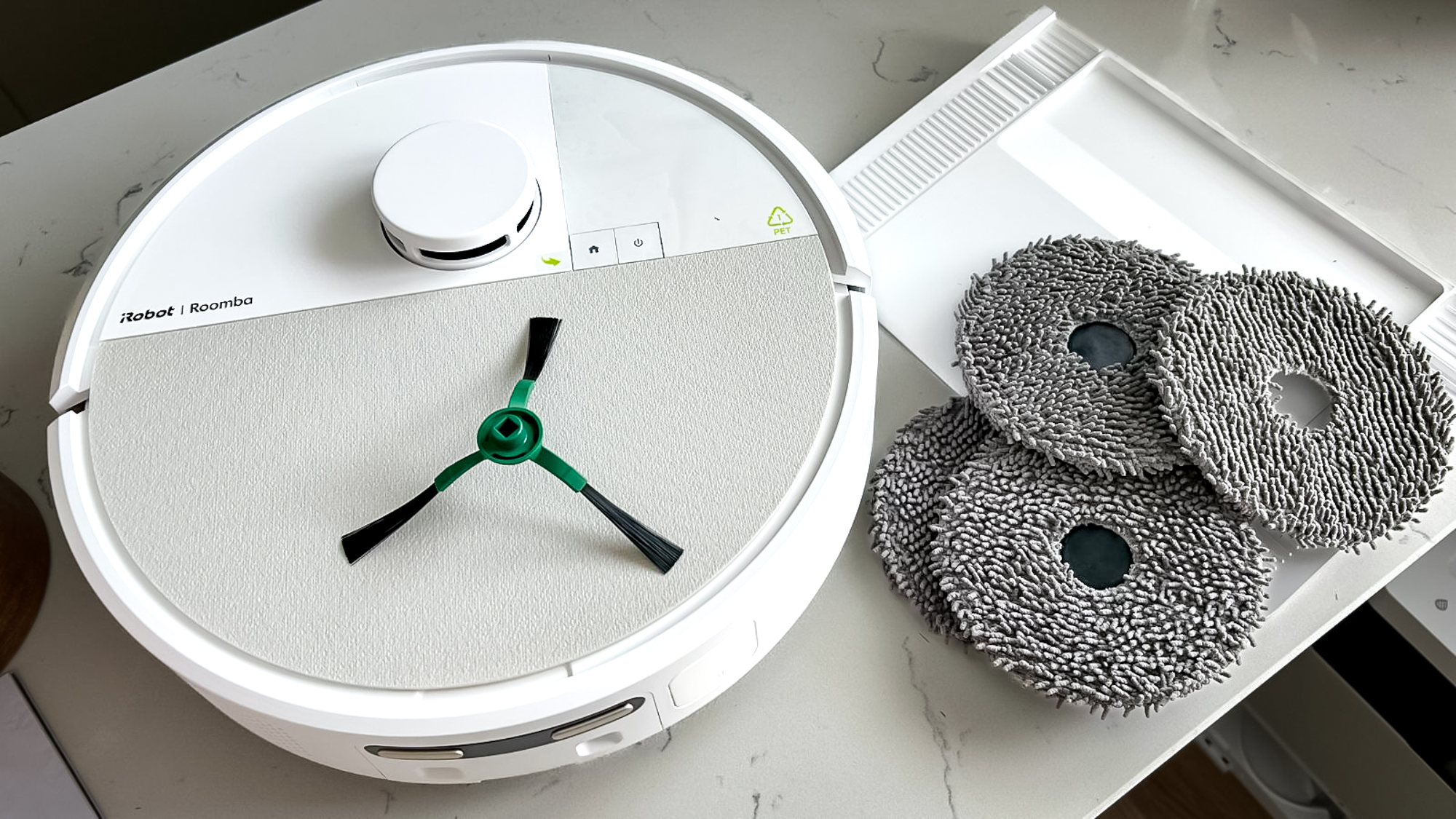

Specifications
Reasons to buy
Reasons to avoid
Struggling with shedding pet hair and dander? We'd recommend the Plus 505 Combo as an affordable, all-in-one vacuum and mop combo to tackle furballs and all sorts of cleaning tasks.
Our tester, Annie, happily put this to good use in her busy family home that includes their shedding pug. After a month of testing, she was impressed at how thorough its pet hair pick-up was from carpets, hard floors and notably her low-pile rug that usually requires daily vacuuming from all the hair.
Perhaps what impressed her the most (besides her rug looking brand new), was that the Roomba Plus 505 automatically detects when it climbs onto rugs, adjusts its suction power and ‘auto lifts’ to accommodate different floor types. Plus, its specially designed brush doesn't get tangled in pet hair, which was a major gripe. Result!
What’s more, the mop function was extremely powerful for regular surface cleaning, getting rid of dust, pesky paw prints, and food spillages from a messy toddler. And unlike other robovacs, it reaches into corners well.
Annie found setting-up straightforward, with a great app that comes with useful features, such as AI PrecisionVision that ensures it doesn’t run over the rogue sock, cords, or worse still — pet poop.
Perhaps the only downsides were that the app was glitchy at times, and the 'spot clean' mode wasn't as thorough at cleaning large debris as we had hoped. However, considering that Annie didn’t find a single strand of dog hair, the Roomba Plus 505 is a winning robot vacuum — making it one of the best robot vacuums for pet hair.
iRobot Roomba Plus 505 Combo test results (out of 100)
| Row 0 - Cell 0 | Overall | Cheerios | Kitty Litter | Pet hair |
Hardwood Floor | 99 | 98 | 98 | 100 |
Carpet | 98 | 97 | 97 | 100 |
Read our full iRobot Roomba Plus 505 Combo review.
Best for high thresholds


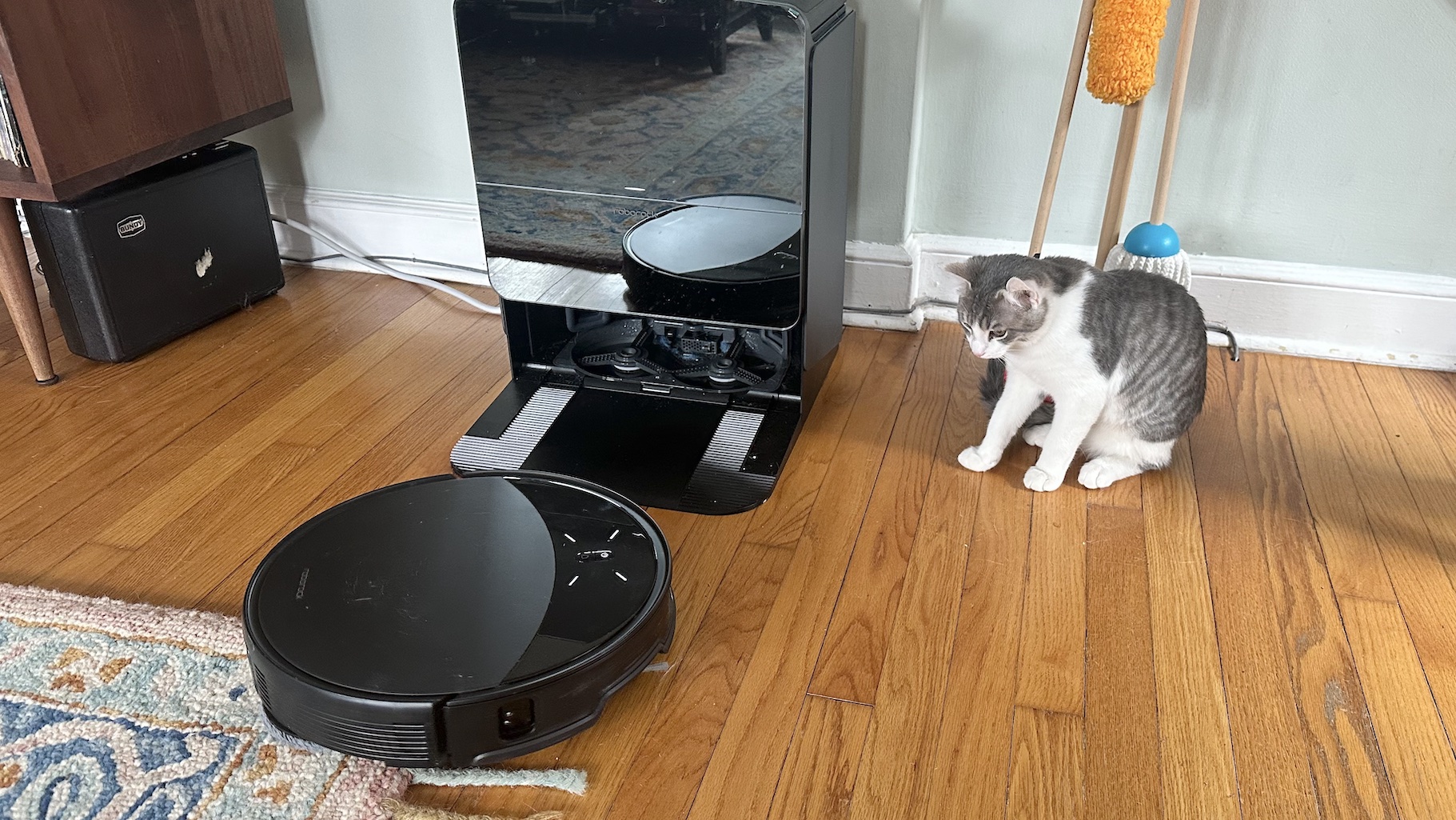
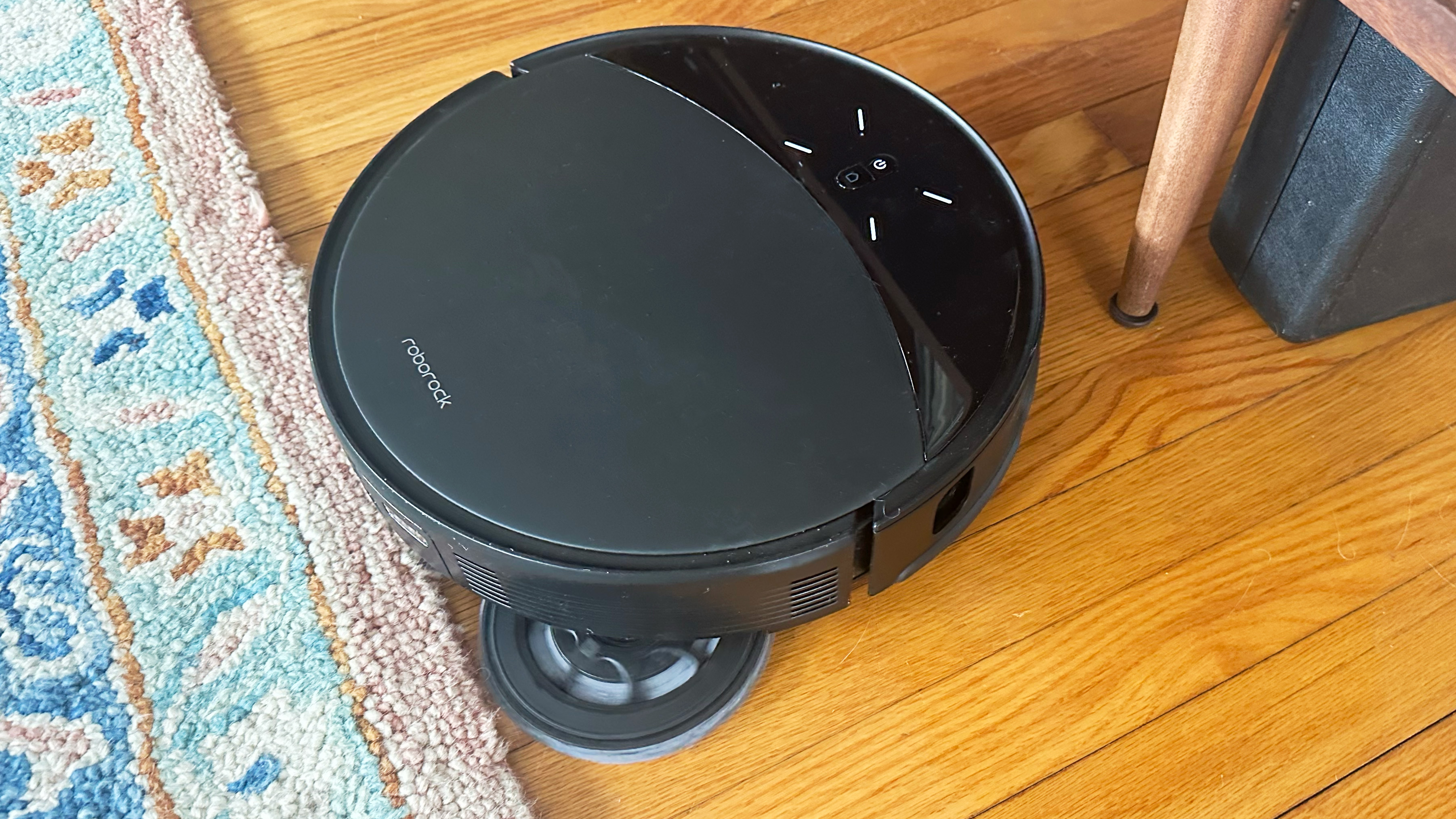
Specifications
Reasons to buy
Reasons to avoid
Whether you have home with high thresholds, or you struggle with removing stubborn hair and dander, the Roborock Saros 10R, hybrid robot vacuum and mop can literally do it all.
From removing stubborn pet hair (from our dog and two cat volunteers), to precise navigation and obstacle avoidance, our Editor, Mike Prospero, felt the Saros 10R is one of the smartest and most thorough robot vacuums he's tested.
Design-wise, we liked its low-profile design, with a sleek mirrored face — although, bear in mind that it might attract stray pet fur! Luckily, it has a self-cleaning base, that will not only swap out the dirty water in the mop, but also clean and dry the mop heads too.
In our tests, we were particularly impressed at how well it lifts itself over high thresholds and its obstacle avoidance. Thanks to the robot’s vision system and AI, it recognized pieces of furniture including a TV stand, couch and also other hazards, such as loose cables, and steered clear of them.
We also liked that the Roborock comes with a very impressive app, offering a wide list of menus and settings to explore, plus the Saros 10R has its own built-in voice assistant, so you can use voice commands to control the robot even if it’s not connected to the Internet. Plus, Mike was very impressed at the built-in camera that can even take pictures of your pets. Who wouldn't want to ?
Bear in mind, this robot vacuum comes at a hefty price, but we can’t fault it for its incredible cleaning power and advanced features.
Roborock Saros 10R test results (out of 100)
| Header Cell - Column 0 | Overall | Cheerios | Kitty Litter | Pet Hair |
|---|---|---|---|---|
Hardwood Floor | 98.5 | 99 | 100 | 99 |
Carpet | 97.3 | 95 | 99 | 98 |
Read our full Roborock Saros 10 review.
Best budget robot vacuum
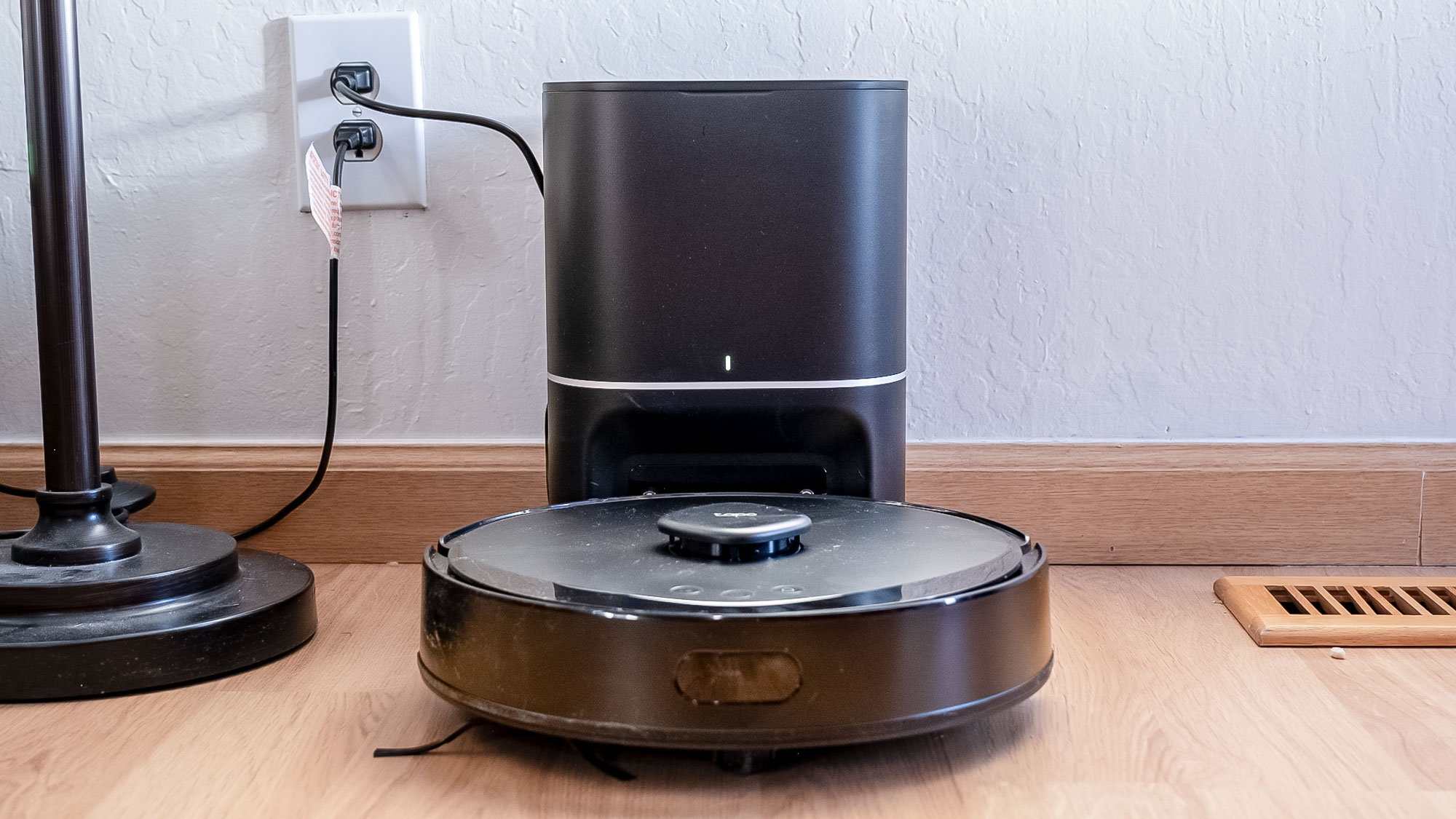
TP-Link Tapo RV30 Max Plus review
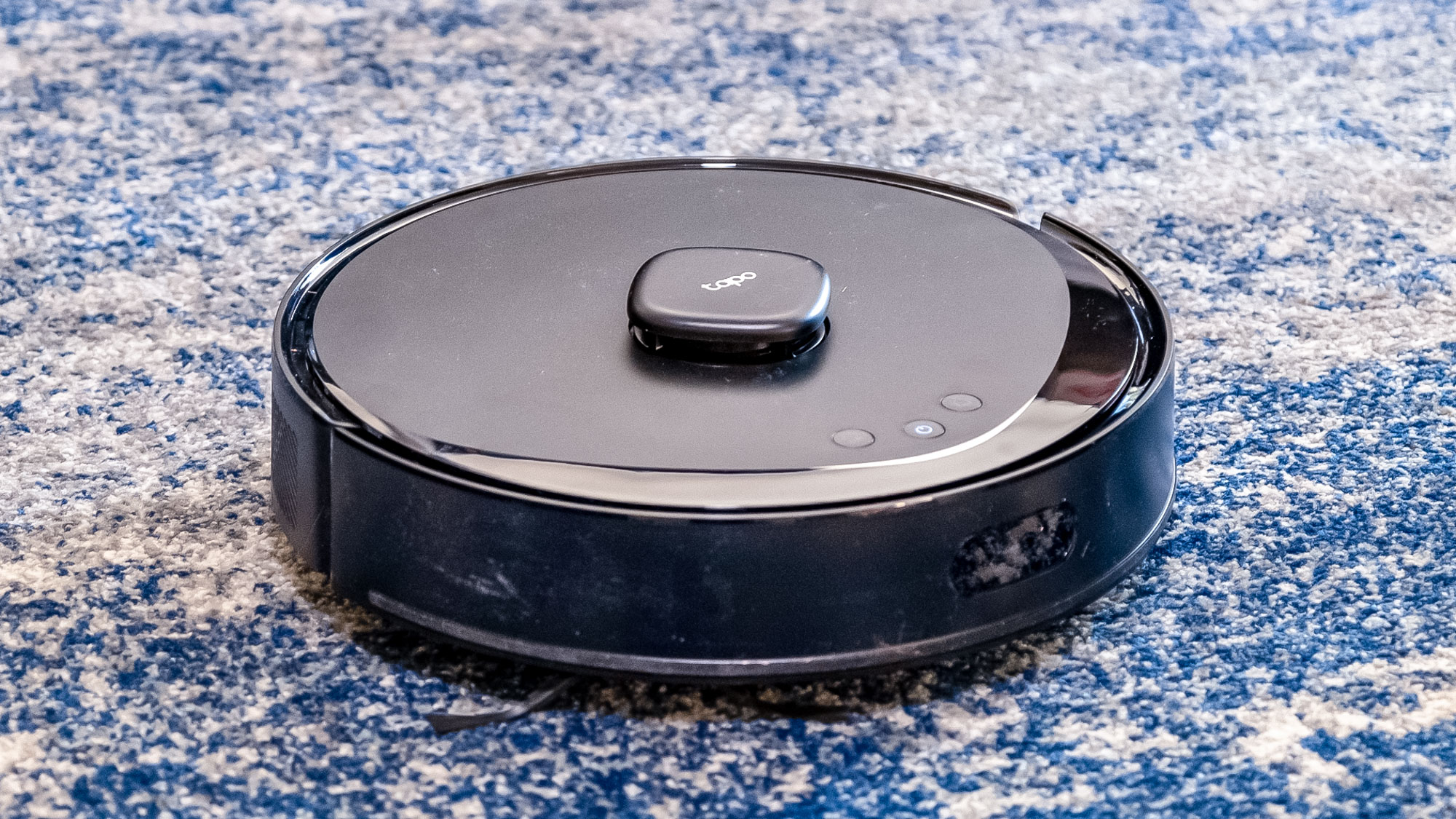
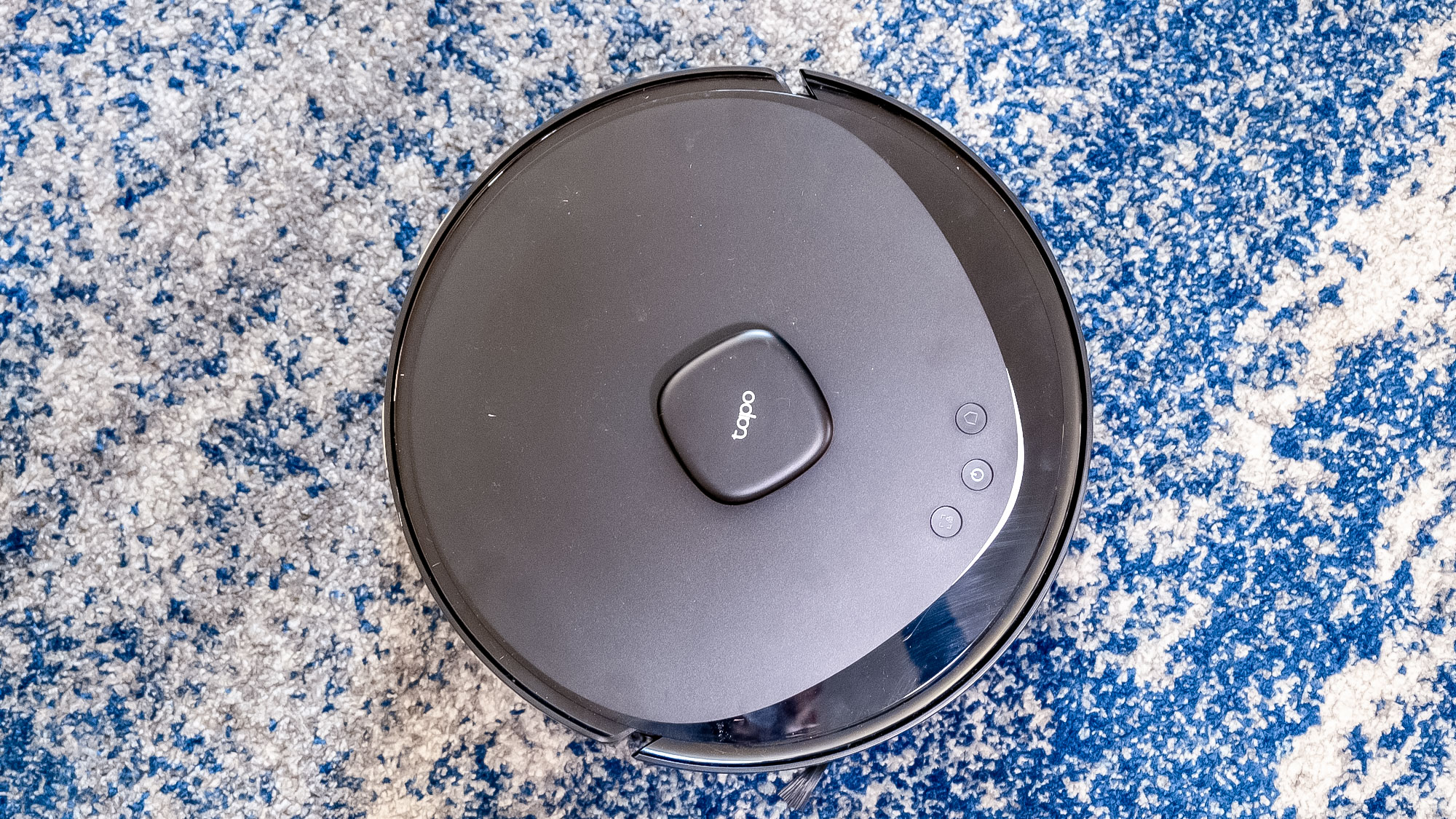
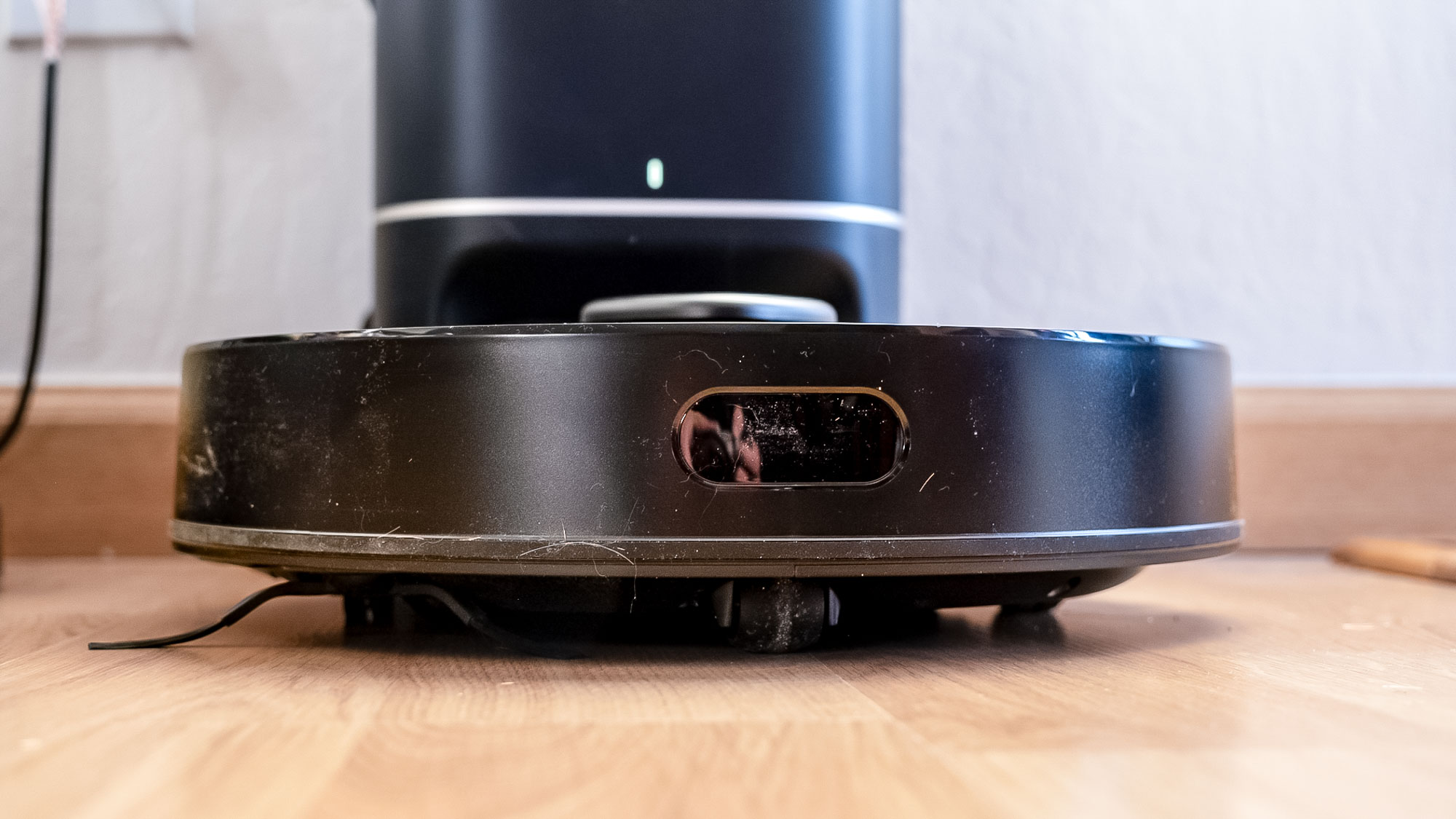
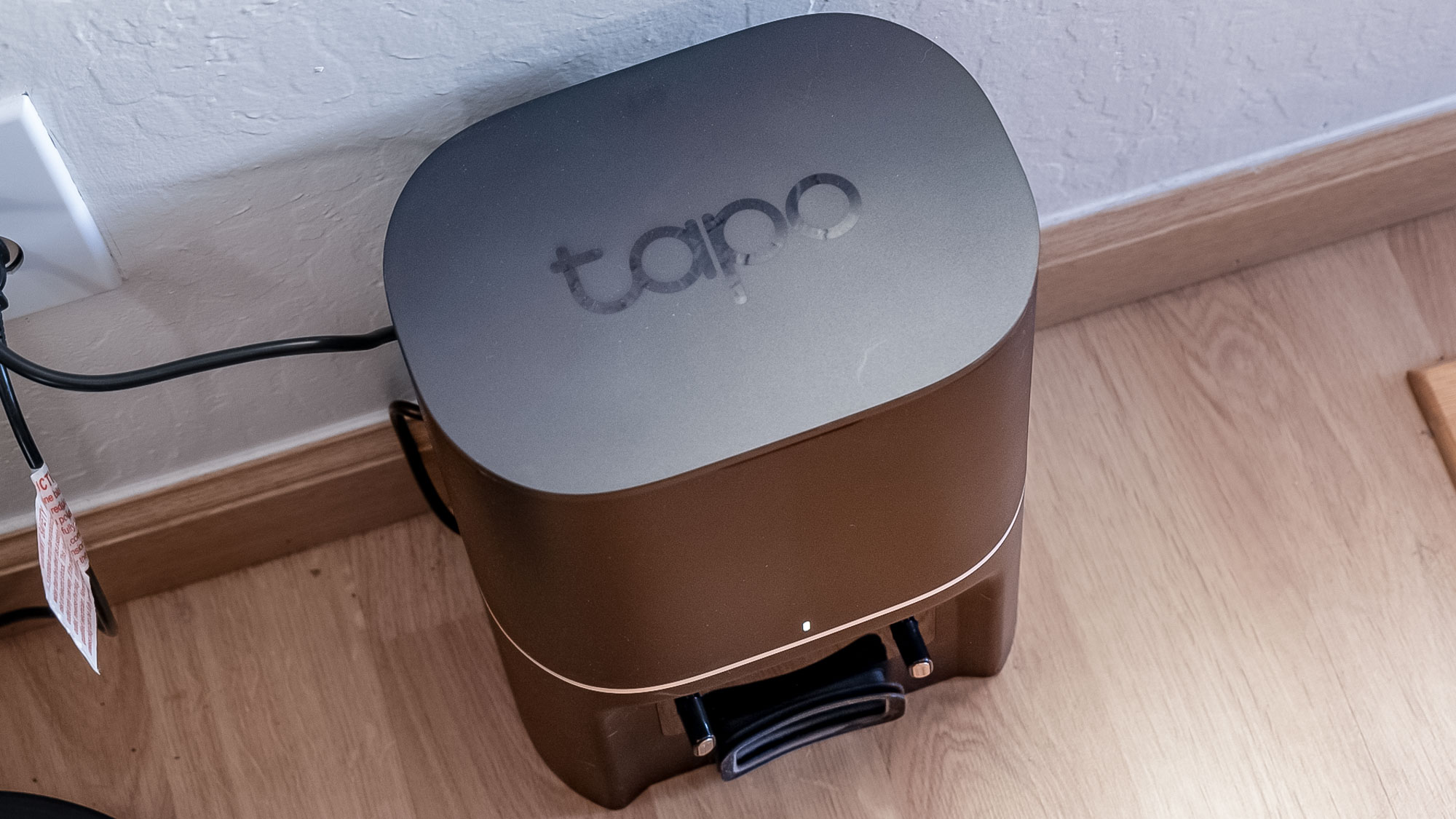
Specifications
Reasons to buy
Reasons to avoid
The RV30 Max Plus proves that you don’t have to spend a fortune on a decent robot vacuum. And if you're on a budget, we recommend the Tapo RV30 Max Plus as one of the best cheap robot vacuums you can get for around $200.
Our tester, Christian, put this to the test around his home and was instantly taken by its compact and ergonomic design. Despite its compact size, it performed well with basic cleaning, and excelled at sucking up cereal and kitty litter on both carpet and hardwood floors.
Similarly, Christian was impressed by its mopping abilities, however don’t expect it to do a deep clean or remove tough, sticky stains. Still, it does a great job for basic clean-ups that won't be demanding.
What’s more, Christian thought the app is well designed and easy to navigate — which was a little surprising given the fact that the Tapo app isn't just built for robotic vacuums, but all of the TP-Link Tapo smart home devices.
Perhaps the only disappointment was it struggled with large amounts of pet hair on carpet, (given the lower 5300 pa, that's to be expected), and be prepared to clean the mop pad yourself. However, for a robot vacuum in its price range, this is an excellent, budget option for daily use.
TP-Link Tapo RV30 Max Plus test results (out of 100)
| Header Cell - Column 0 | Overall | Cheerios | Kitty Litter | Pet Hair |
|---|---|---|---|---|
Hardwood Floor | 98.8 | 99.4 | 91.7 | 82 |
Carpet | 90.7 | 98 | 90.7 | 80.6 |
Read our full TP-Link Tapo RV30 Max Plus review.
Best robot vacuum for carpet
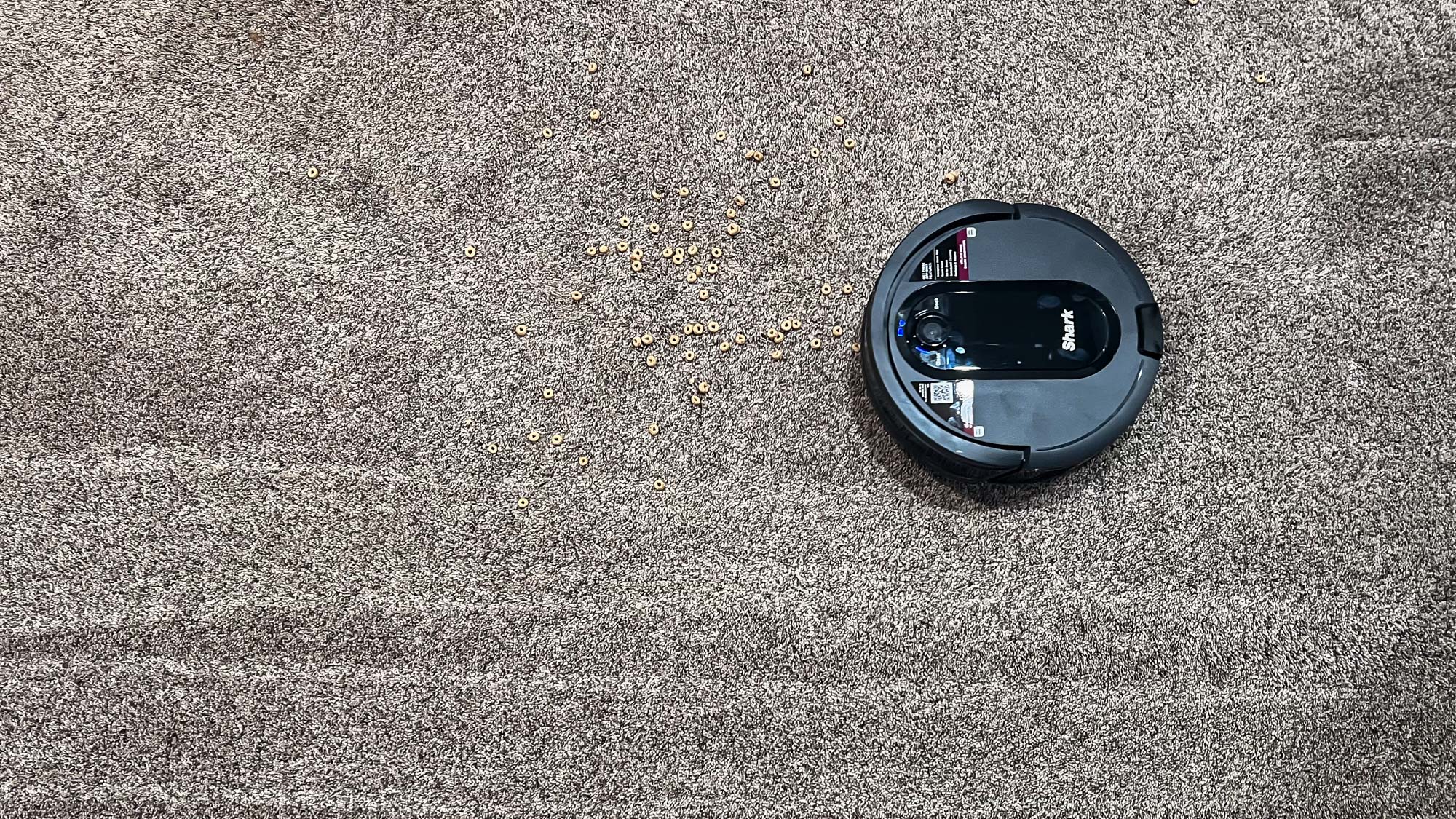


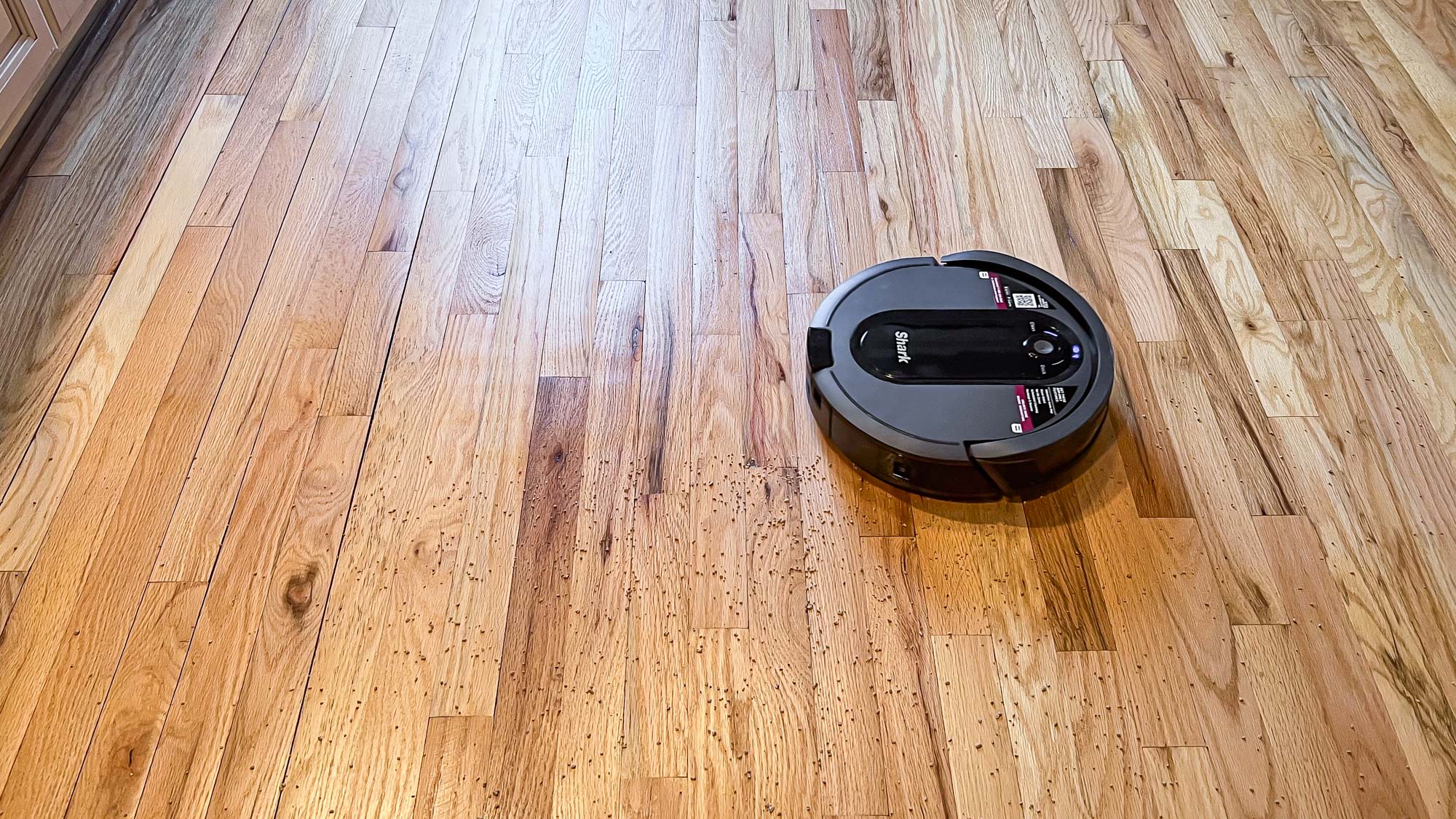
Specifications
Reasons to buy
Reasons to avoid
if you have plush carpets, there's nothing worse than seeing dirt, debris or even stubborn hair cling to the fibers after vacuuming. Out of the robot vacs on this list, we recommend the Shark IQ as the best option for carpets.
Our tester, Hunter, put it through its paces around his home and was impressed by its power to quickly suck up hair and debris from thick shag carpet. While the longer fibers and rough texture didn't seem much of a challenge, neither was the task of picking up kitty litter and crushed cereal. Win-win! Similarly, its performance on hardwood was even more impressive, removing virtually all traces of debris and dust, and making quick work of messes.
Additionally, Hunter felt the navigation was on point, and rather than move around in random patterns, the Shark IQ goes back and forth in a grid-like pattern that effectively picks up the smallest of debris. At 3.5 inches tall, it's an average height, but it may struggle under low-reaching furniture. For instance, it reached the gaps under his kitchen cabinets with ease, but couldn't sneak under the couch.
In any case, it comes with a great App that allows you to easily set your schedules, no zone areas, and has accurate room mapping. Plus, it's super convenient not to have to dump out contents after every run, especially if you're upgrading from a typical on-board dustbin. The Shark IQ is a high-performance option if you want a self-emptying charging base, without paying top dollar.
Shark IQ test results (out of 100)
| Header Cell - Column 0 | Overall | Cheerios | Kitty Litter | Pet Hair |
|---|---|---|---|---|
Hardwood Floor | 99.3 | 98 | 99.8 | 100 |
Carpet | 96.6 | 95 | 98.7 | 97 |
Read our full Shark IQ review.
Best robot vacuum with accessories
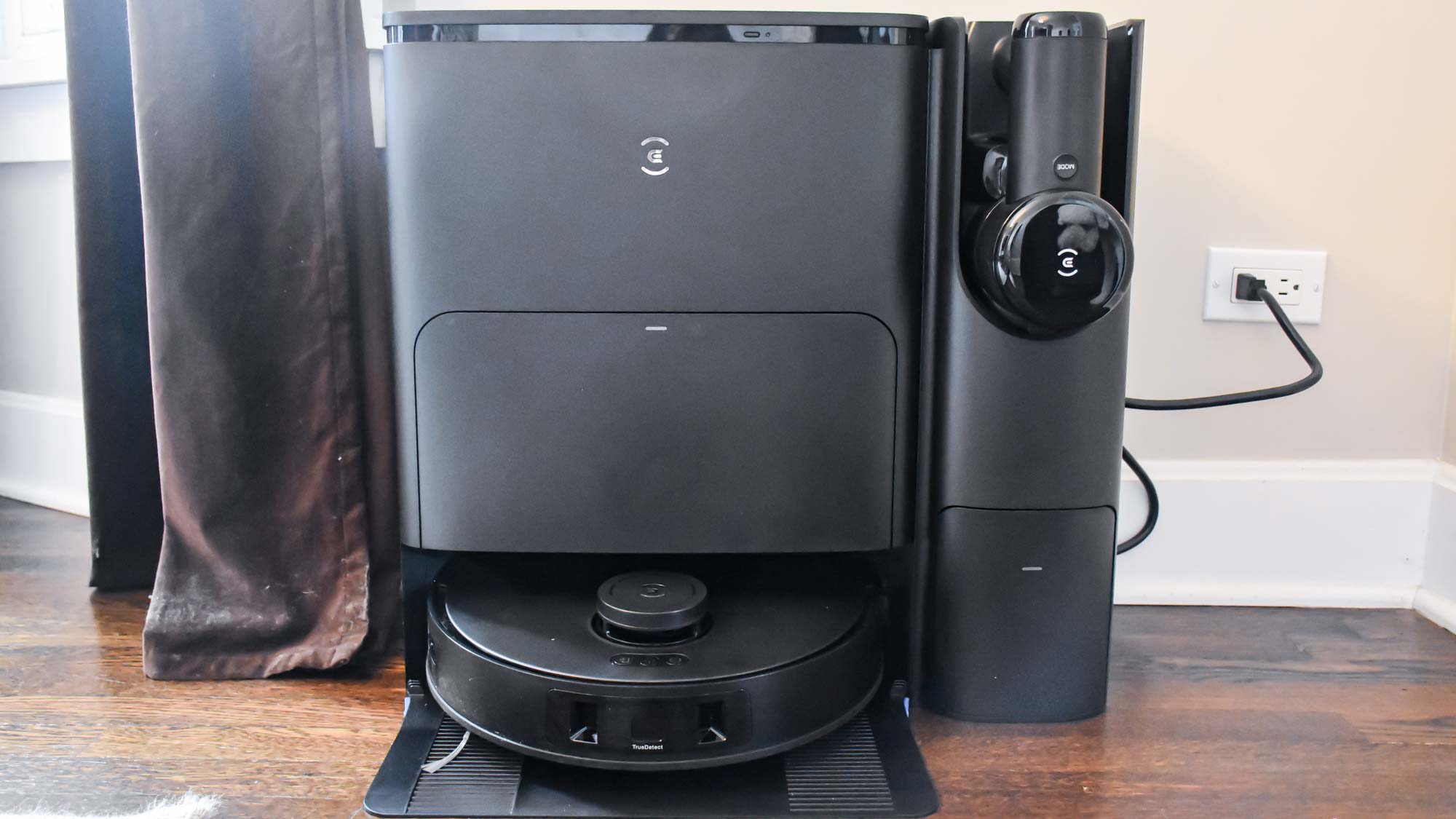


Specifications
Reasons to buy
Reasons to avoid
While the best robot vacuums can get nearly every inch of your floors, there's one place they can't reach: Your couch cushions. That's why we rated the Ecovacs Deebot T30s Combo as a great option for those who want to clean their upholstery, but don't want to buy a second vacuum just for the task.
When our tester put it to the test, she was impressed by its versatility. Connected to the base of this robot vacuum is a handheld cordless vacuum attachment to tackle stairs and couch cushions. Like the bot, this extra vacuum charges and self-empties right alongside the robot in the included self-emptying, self-cleaning, and self-filling Omni Station. There’s even a drawer built into the station that stores the hand vac attachments.
The Deebot T30s smartly cleaned both our hardwood floors and carpet; we loved how it could attach its scrubbing pads, but then leave them back at the dock when it came time to vacuum.
Best of all, the T30s did very well on our cleaning tests, earning an average score of 93%; while that isn't tops among the best robot vacuums, that's still very good. The handheld vacuum was a great complement; not only did it suck the crumbs out of our couch cushions, but it was also able to pick up the kitty litter that the Deebot T30s missed in the carpet cleaning lab test.
Though it’s an investment (at $1,199 during time of writing), consider that you’re getting almost three cleaning devices in one package: a robot vacuum, robot mop, and a hand vacuum for reaching all the areas the robot misses.
Our only disappointment was that it struggled to remove pet hair from the carpet. However, there's not much this hybrid vacuum misses, which excels in picking up cheerios and cat litter.
Ecovacs Deebot T30s test results (out of 100)
| Header Cell - Column 0 | Overall | Cheerios | Kitty Litter | Pet Hair |
|---|---|---|---|---|
Hardwood Floor | 96.6 | 100 | 92.5 | 97.4 |
Carpet | 89.5 | 99.5 | 93.9 | 75 |
Read our full Ecovacs Deebot T30s review.
Best robot vacuum for hard floors
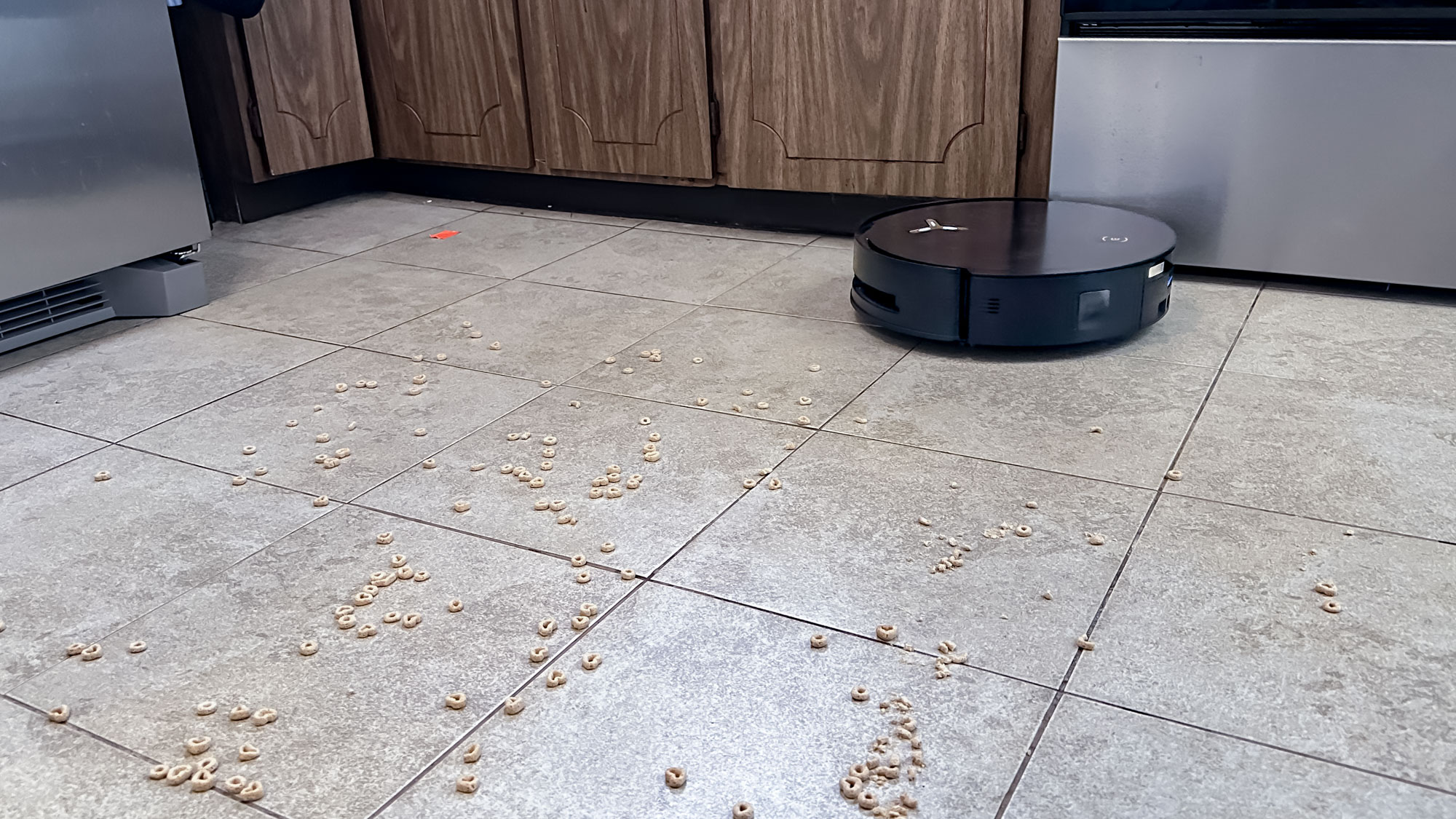

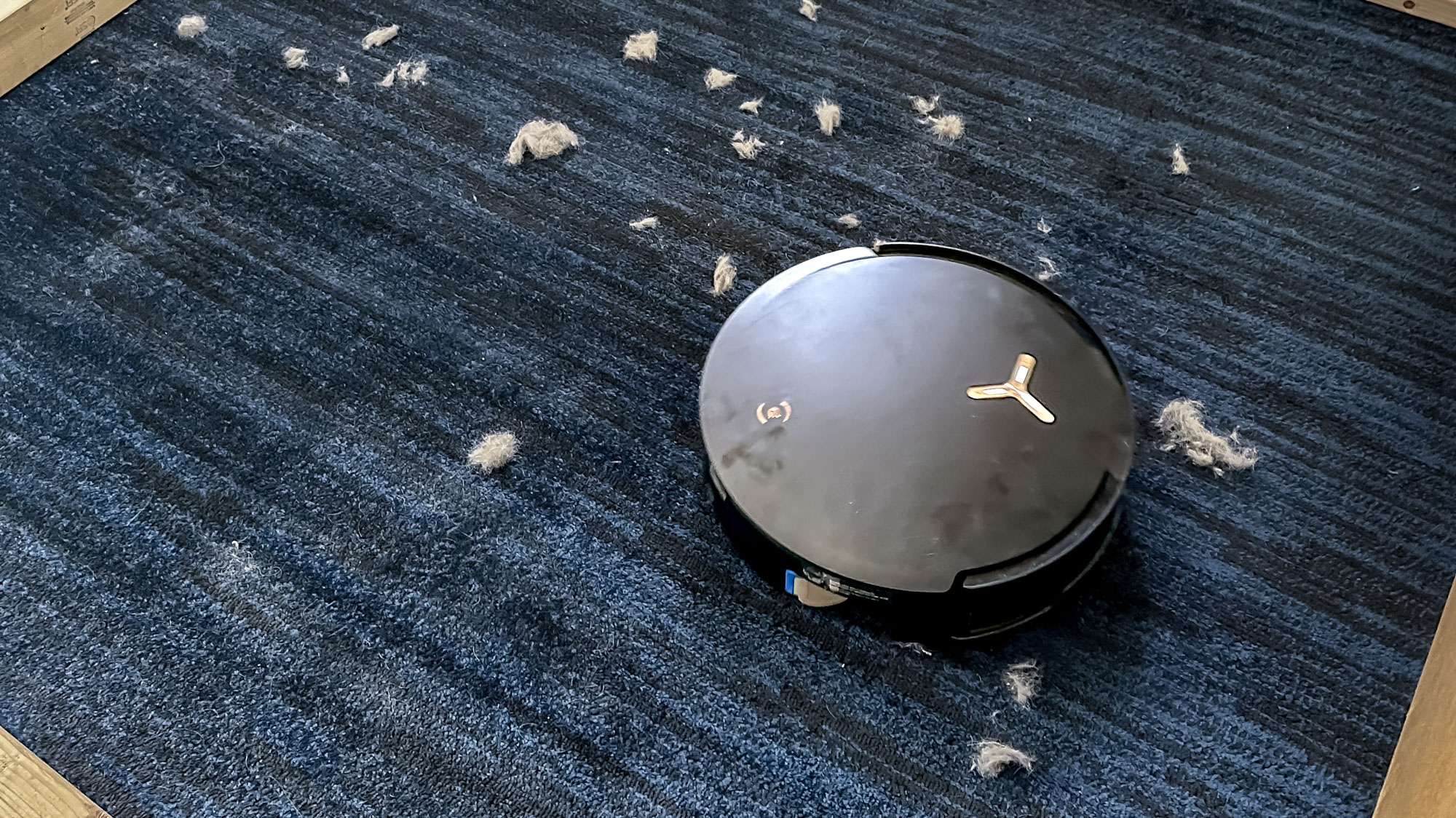
Specifications
Reasons to buy
Reasons to avoid
Hard floors can be a challenge to keep clean and look spotless on a daily basis — especially if you have a pet, child (or both) household. And the Ecovacs Deebot X8 Pro Omni shone above the rest for its top performance on hard floors — and its excellent mop function.
When our tester reviewed this model, he gave it top scores for quickly sucking up debris and dirt around his home. And while it could improve on its pet hair score (still a decent 70%), it excelled in the kitty litter test on both carpet and hard floors.
Perhaps what was more impressive was the Deebot X8 Pro Omni’s mop capabilities to scrub away at surface dirt and make it sparkle again. It got to work tackling stubborn stains thrown its way — from ice cream and hot sauce to even thick peanut butter.In fact, he stated that his floors have “never been cleaner”, which is always a bonus.
The robovac also comes with a user-friendly app with handy features including the option to choose individual rooms to clean, or the entire home and you can even draw a small area for it to clean if there is a spill.
Overall, the Ecovacs Deebot X8 Pro Omni is a great choice for handling all your hard floor needs. Our tester called it “stellar” for its impressive cleaning performance in real-world scenarios, and it kept his home spotless.
Ecovacs Deebot X8 Pro Omni test results (out of 100)
| Header Cell - Column 0 | Overall | Cheerios | Kitty Litter | Pet Hair |
|---|---|---|---|---|
Hardwood Floor | 99.2 | 99.4 | 98 | 75 |
Carpet | 86.4 | 90 | 99 | 70 |
Read our full Ecovacs Deebot X8 Pro Omni robot vacuum review.
Best premium robot vacuum
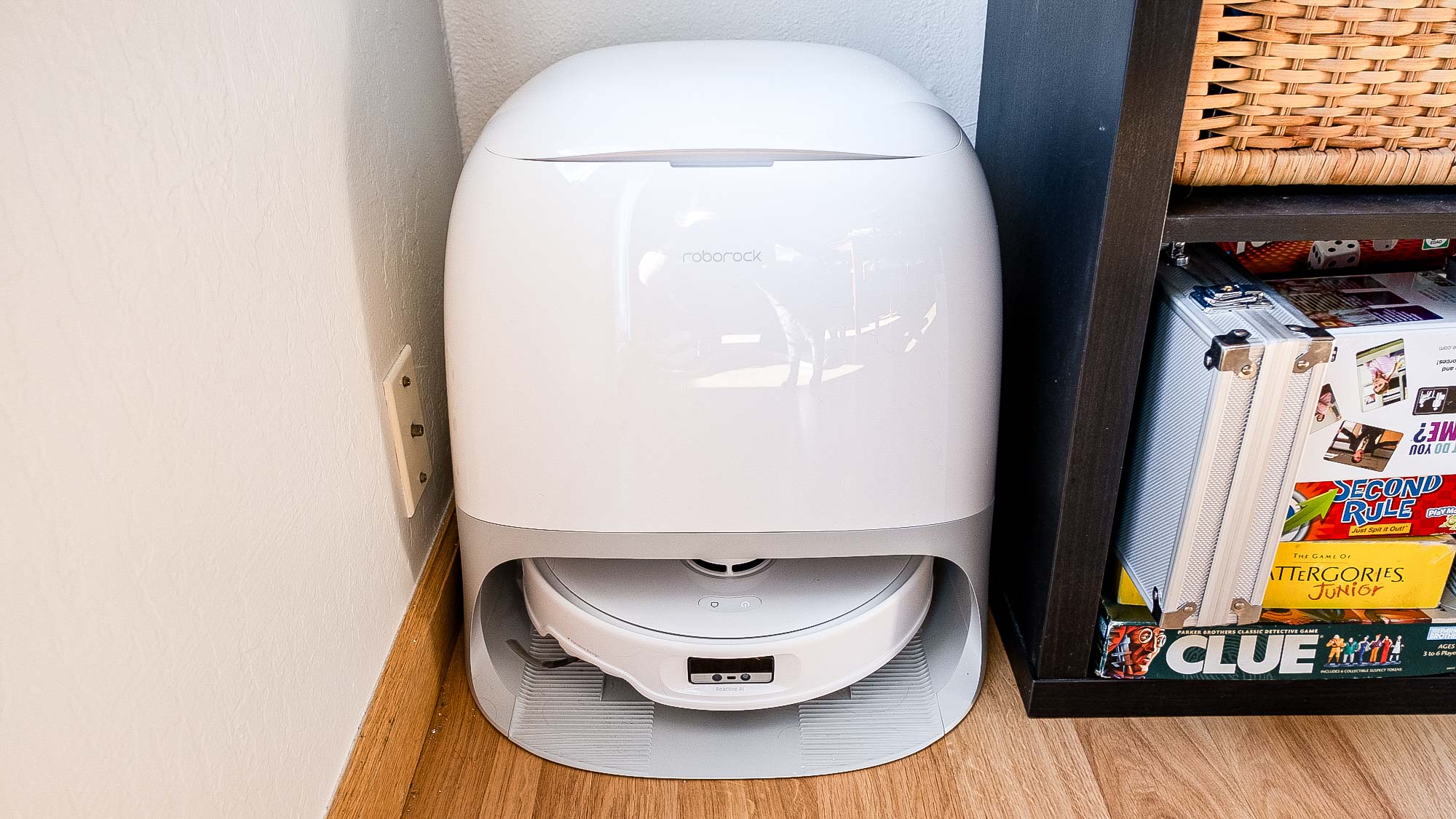
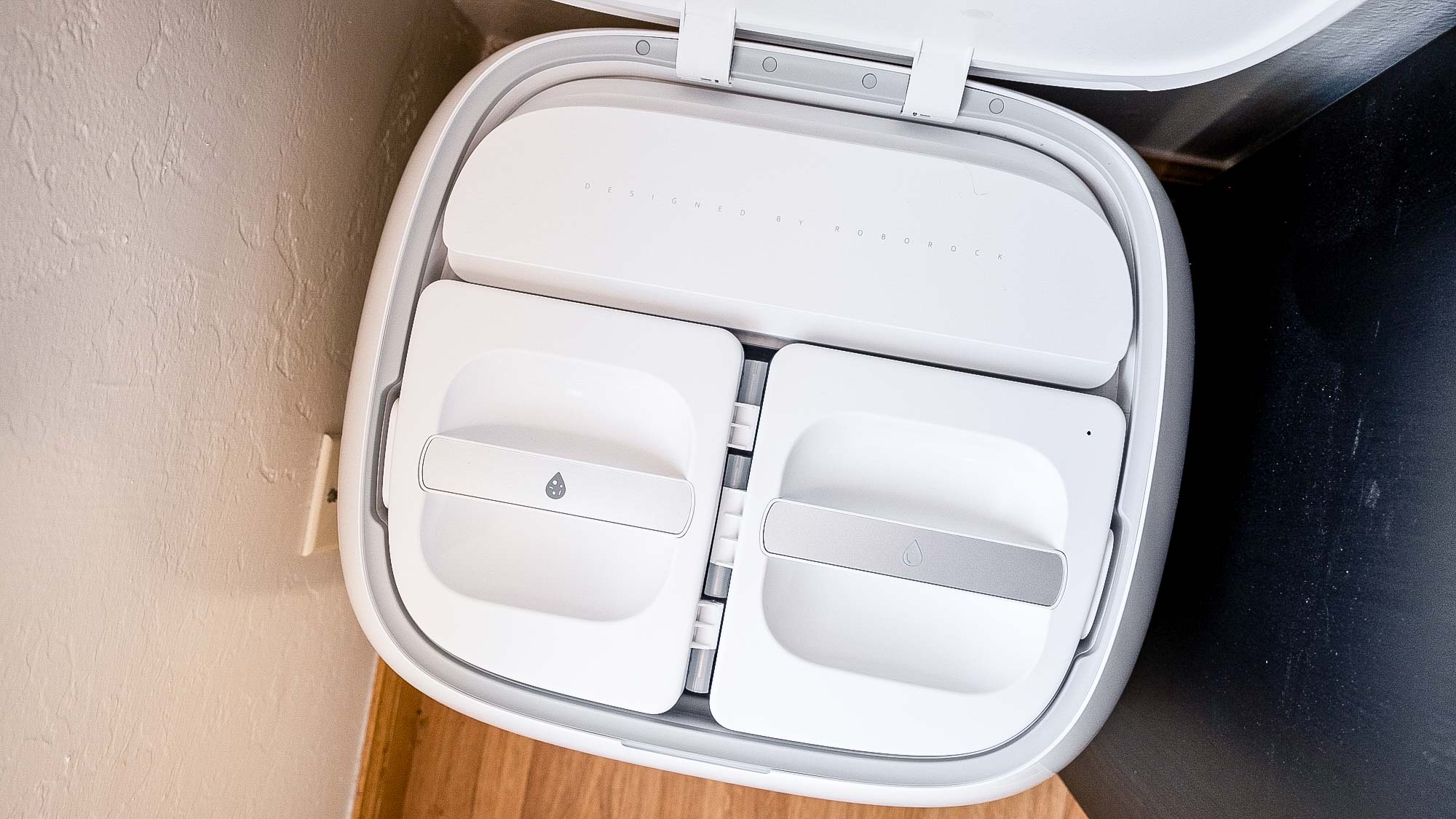
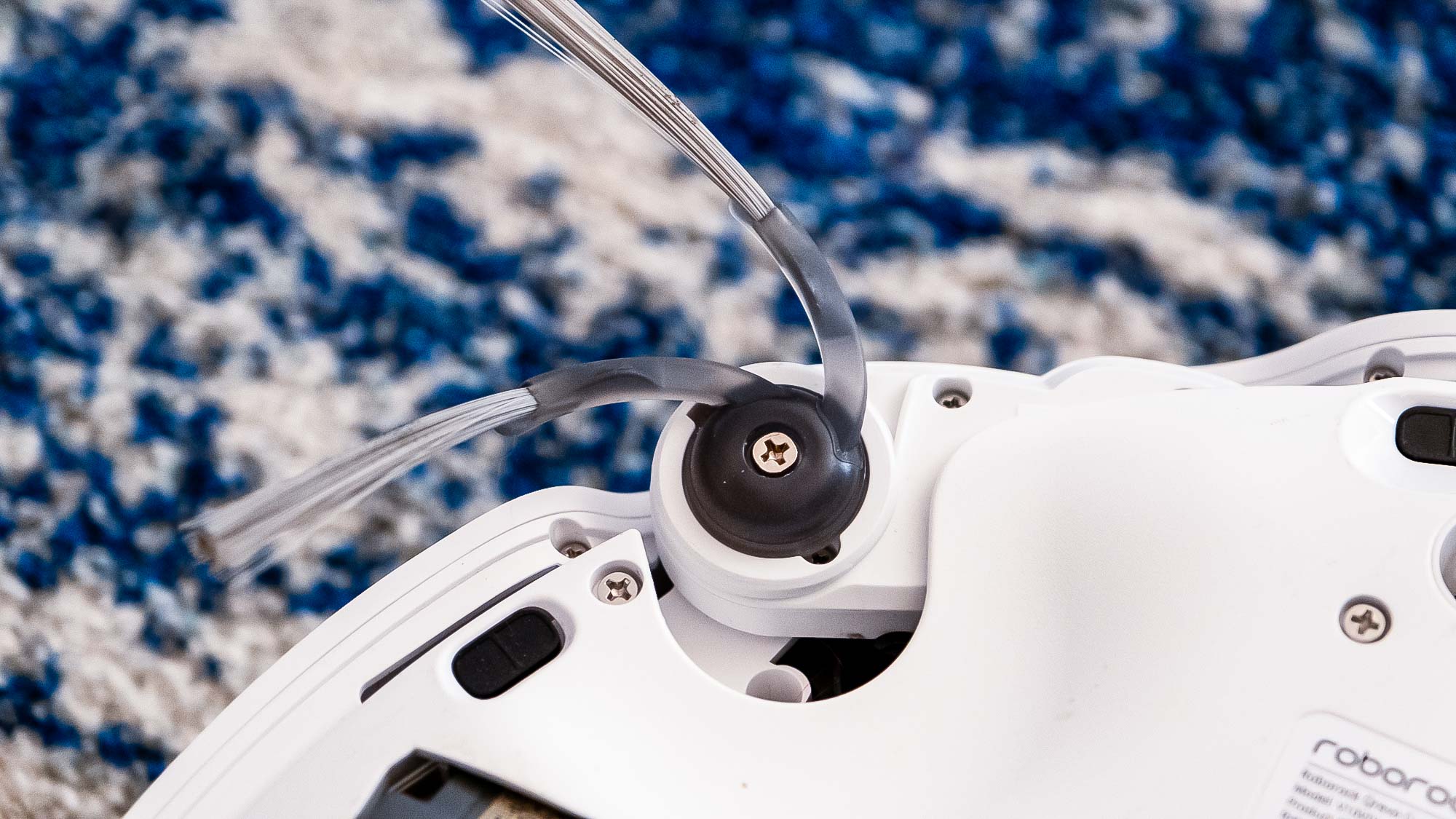

Specifications
Reasons to buy
Reasons to avoid
The Roborock Orevo Curv ticked all the boxes for us, proving to be a great, splurge robot vacuum. Perhaps what stands out is its attractive, sleek design of the curved docking station. Which won't look out of place in any room style.
It's also packed with handy features such as its upgraded AdaptLift chassis that allows easy access over thresholds without getting stuck. The App was easy to set up, map and schedule routines. More importantly, the Orevo Curv excelled in the majority of our tests.
Our tester, Christian, put it through a host of tests, and was impressed by its cleaning performance. Particularly its hard wood results, and excellent pick-up for cereal, kitty litter and pet hair. And while removing dog hair on carpet wasn't as impressive, it still rated high in comparison to others that we've tested. What's more, we were impressed with its mopping results, and the self-cleaning doc was a bonus.
It does come at a hefty price, and there are cheaper models such as the Shark PowerDetect, that can do a decent job. However, if you're after a splurge buy, and want top-notch results each time, we would recommend the investment.
Roborock Orevo Curv test results (out of 100)
| Row 0 - Cell 0 | Overall | Cheerios | Kitty Litter | Pet hair |
Hardwood Floor | 97 | 97 | 98 | 98 |
Carpet | 95 | 96 | 96 | 94 |
Read our full Roborock Qrevo Curv review.
Best robot and mop hybrid
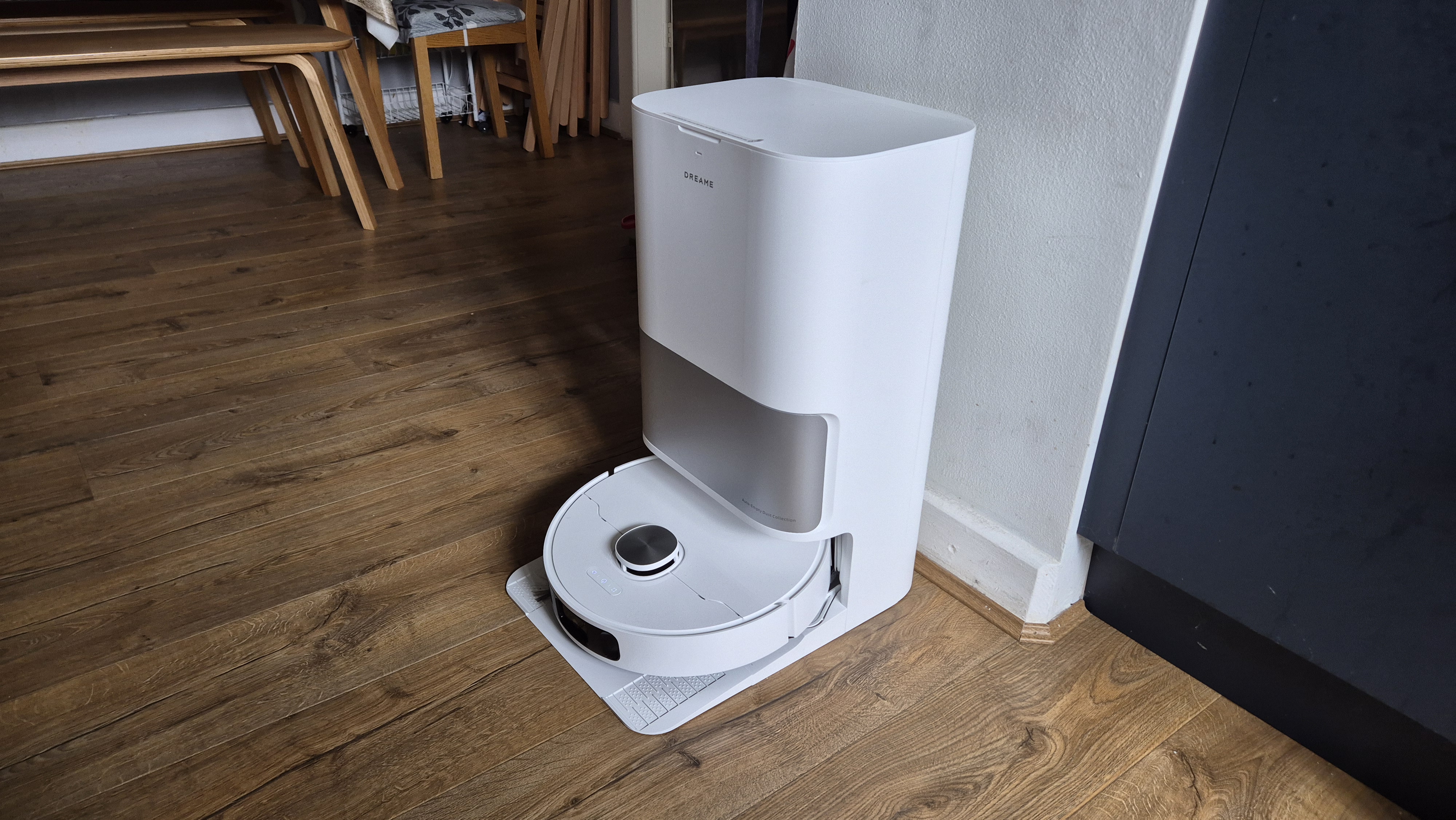
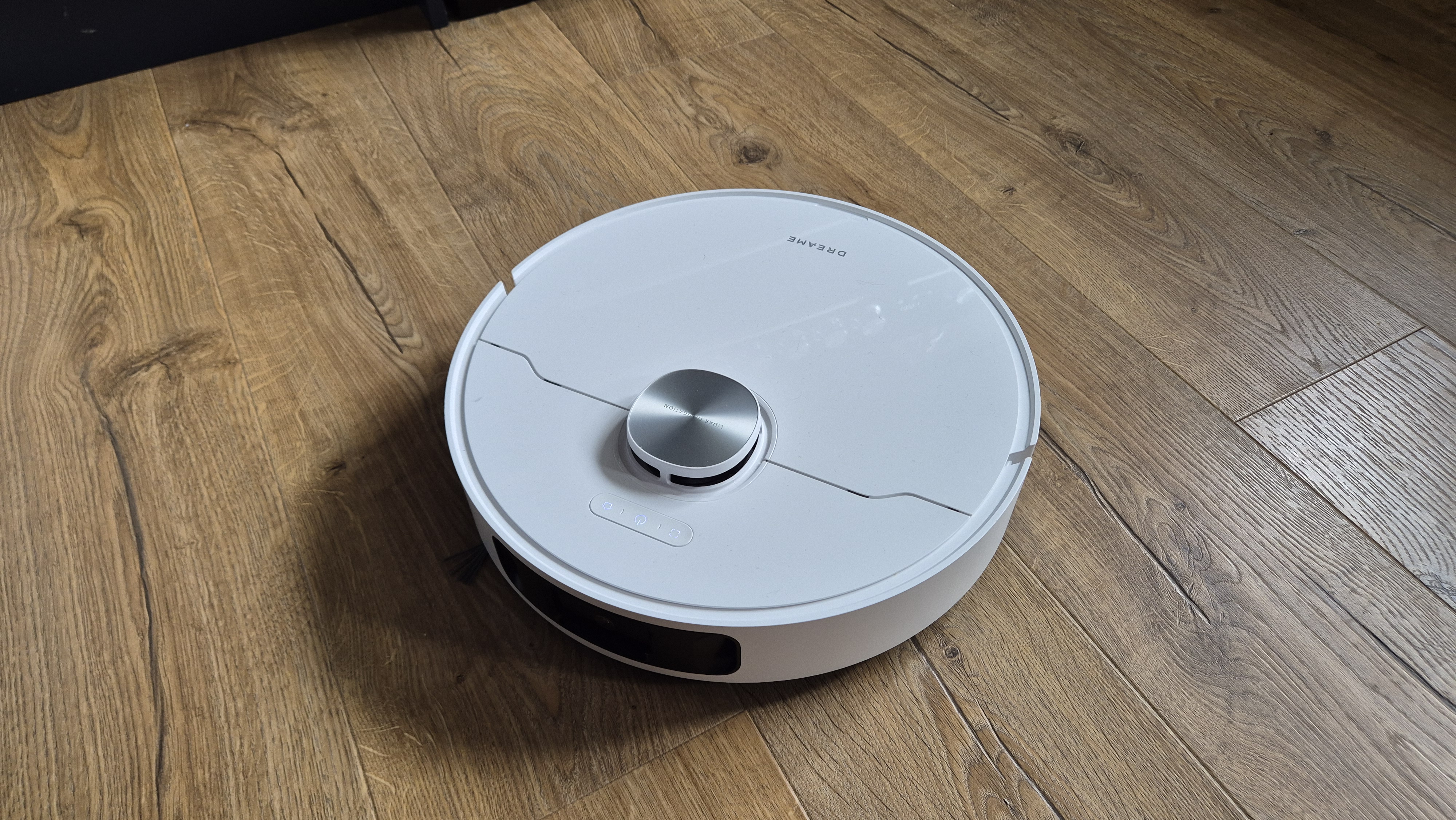
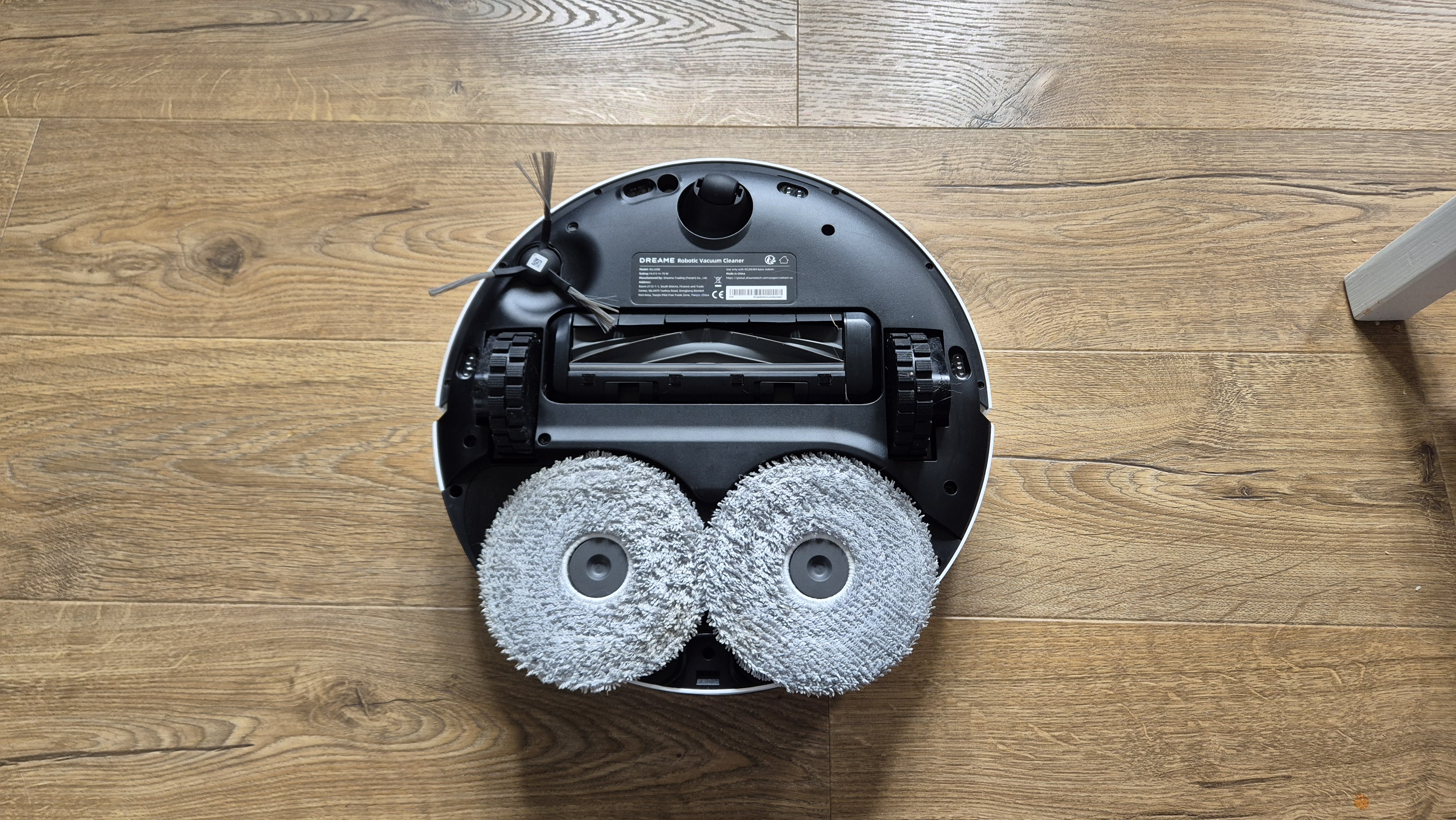
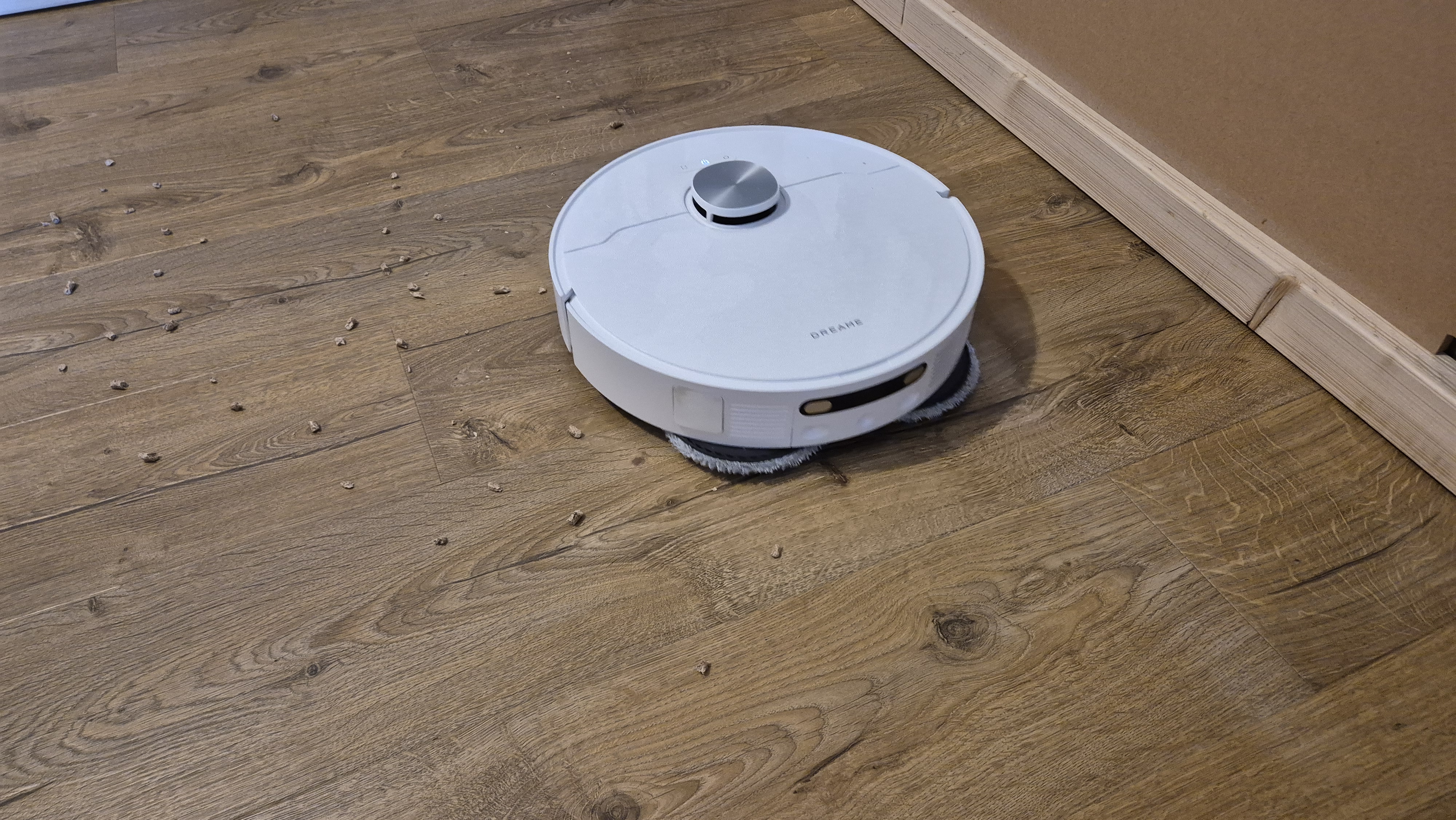
Specifications
Reasons to buy
Reasons to avoid
If you have mainly hard flooring, you’ll need to keep it clean and spotless at all times. And if you’re after a great robot vacuum and mop hybrid, the Dreame L10s Ultra Gen 2 didn’t disappoint.
Our tester, Matt, put it to the test in his home, literally throwing everything in its way to see how well it performed on both carpets and hardfloors. Thankfully for him, the Dreame L10s Ultra Gen 2 gave a solid performance, with enough suction power to pick up to 90% of dirt, debris, cheerios and even kitty litter.
Matt was also impressived with its mopping and stain removal abilities. While most hybrid mops struggle with stubborn marks, the Dreame L10s Ultra Gen 2 excelled when tackling tough stains like tomato ketchup with ease. This is thanks to its MopExtend function that kicks out one mop head for better coverage.
Additionally, it comes with four levels of suction power, and a whopping 32 levels of desired floor wetness, along with an adjustable mop-washing frequency. Which is ideal for those with messy kids or pets running around the home.
What’s more, at just under $500, we feel the Dreame L10s Ultra Gen 2 offers great value for money for such a premium performance. In fact, the only minor disappointment Matt noted was that its edge cleaning could be a little more precise. Plus, it doesn’t have any fancy mod cons.
However, if all you need is a great robot vacuum and mop that can handle both tasks well, you don't need anything more.
Dreame L10s Ultra Gen 2 test results (out of 100)
| Row 0 - Cell 0 | Overall | Cheerios | Kitty litter | Pet hair |
Hardwood Floor | 97 | 97 | 97 | 98 |
Carpet | 95 | 94 | 95 | 96 |
Read our full Dreame L10s Ultra Gen 2 review.
Also tested
We've tested many robot vacuums at Tom's Guide. While most perform great, they aren't as easy to recommend for everyone. That's due to a lack of features at higher prices or more niche use cases that aren't as versatile as the top models in our list. Still, the models below are worth checking out if money isn't an issue.
Despite its small stature and budget price, this robot vacuum and mop hybrid did a great clean. This is thanks to its 6000 PA of suction power. In our tests, it impressed us with its pet hair suction, and managed to pick up every last bit of debris both on hardwood and carpet. Its only downfall was its mop cleaning and inconsistent mapping. However, its miniature size makes it perfect for smaller homes.
Read our full SwitchBot K11+ review.
This E28 is a fantastic robot vacuum that can practically do it all. It has a portable detachable cleaner for deep cleaning, and 20,000 Pa Turbo Suction. The all-in-one cleaning station can self-empty, self-clean, hot air dry, dispense detergent automatically, collect wastewater, and self-refill. Despite its decent performance and excellent mopping however, it fell short with picking up larger debris.
Read our full Eufy E28 review.
The SwitchBot K10+ Pro Combo robot vacuum scored top marks for innovative design. The robot vacuum and stick makes for an effective combo. In our tests, both were easy to use, had a great smart mapping system, and cleaned fairly well. However, it struggled picking up larger debris, such as cereal, and other heavy-duty messes. for money. Another caveat is the robot vacuum can't get into deep/sharp corners, or navigate around obstacles if the path isn't big enough.
Read our full SwitchBot K10+ Pro Combo robot vacuum review.
Although the RS20 Pro did a decent job at maintenance cleaning, has plenty of settings, and a great app, it fell short on several other things. It couldn't cope well with heavy-duty messes, particularly when tested on cat litter. And considering there are cheaper models that perform better, this was a major downside. However, if you just need it for light cleaning, this is adequate, but you might want to consider other options.
Read our full EZVIZ RS20 Pro review.
The Roomba j7+ features object recognition and learns from what it encounters. That means you don’t need to worry about pet poop collisions. However, it didn't fare as well as others when picking up pet hair on carpets.
Read our full iRobot Roomba j7+ review
The Dyson 360 Vis Nav almost has it all: immense suction, excellent edge cleaning, and a great design. Plus it's packed with all sorts of features, such as disc brakes and a remote electronic lock. However, it's expensive and lacks a self-emptying option which makes it more hands-on.
Read our full Dyson 360 Vis Nav review.
If your home has an equal ratio of hardwood floors to carpets then iRobot's hybrid robot mop and vacuum is tough to beat. You get a thorough clean with a mopping pad that automatically retracts atop the vacuum. This prevents any water from dripping onto fabrics. But for the price it is a hassle to have to manually remove and wash the mop after each cleaning session.
Read our full Roomba J9+ review.
The iRobot s9+ is simple to operate and provides strong pick up across hard floors and carpet. Its high-end performance especially excels in picking up strands of pet hair. Roomba's self-emptying base saves you time and effort on maintenance too.
Read our full iRobot Roomba s9+ review.
How we test



Over the past 10 years, we've tested dozens of robot vacuums, both by performing objective tests as well as real-world setups.
Each model we review is first evaluated to see how well it can pick up three types of debris. We measure out 20 grams of Cheerios, 20 grams of kitty litter, and 20 grams of pet hair.
Next, we scatter each individually across a hardwood floor, and then weigh the contents of the robot vacuum's dustbin to see how much of each it picked up. We then repeat the same three tests on a low-pile carpet. Afterwards, the robot vacuum receives a cleaning performance score, which is the percentage of debris it was able to collect.
After we record each robot vacuum's scores, we let these machines loose in our tester’s home to see how each holds up in terms of navigation, obstacle avoidance, and coverage in real-world testing. Any special features such as app control, mopping functions, and self-emptying bases are factored in too. This all adds up to weeks of testing; it takes time, but helps ensure we're evaluating them all properly.
After extensive testing, we’ve compiled several buying guides to showcase our results, including the best Roombas, the best cheap robot vacuums and the best robot mops. We can even tell you what it's like when you use a robot vacuum in your home for the first time. So if you want to know more about robot vacuums so you can decide if one is right for you, you’ve come to the right place.
How to pick the best robot vacuum
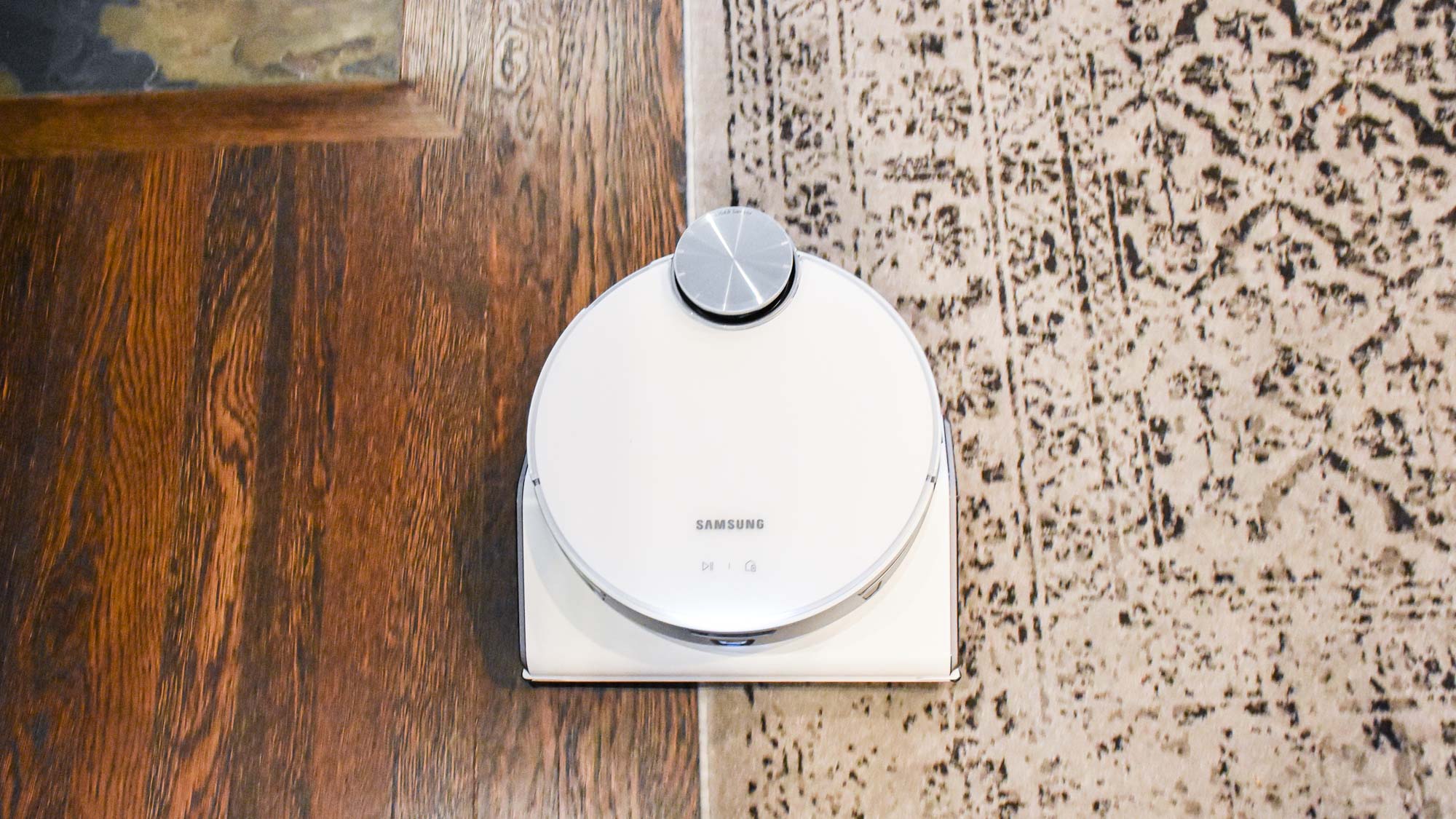
Before you start shopping for a new robot vacuum, you should consider what you need from it and how much you’re happy to spend. Here are some of the most common features you can find in robot vacuums.
Carpets or hardwood?
Most robot vacuum models can easily handle cleaning both carpets and hardwood, but some are better at cleaning one or the other. Higher-end robot vacuums such as the Roomba J9+ Combo can accommodate rapid surface changes by folding its mop pad atop itself and ramping up power whenever carpet is detected, and then throttling back down when it senses hardwood. Rugs should also factor into your buying decision. You might find that lower-end models will get caught up in tassels.
What features do I need to look for?
Features to look for include whether it has Wi-Fi compatibility. Most robot vacuums can connect to your smartphone via Wi-Fi, but some lower-end models don’t have this option. However, you can control and monitor your robot vacuum from your phones.
Additionally, battery life is important to consider and this will depend on your usage and settings. If you opt for a model which comes with a base, it can self-charge between runs. Plus, the dust canister needs to be a sufficient size. Look for a minimum of 400ml - the smaller the dustbin, the faster it will fill.
Another handy feature is a self-emptying base. Once the robot vacuum’s dustbin is full, it will return to its charging dock to ‘self-empty’. This is then stored in the dock until this larger bin is full and needs emptying, which you will need to do, usually once a month or less, depending on how often your robot vacuum cleans.
What is a "hybrid" robot vacuum?
Some robot vacuums also have a mopping function, so you can more effectively clean your hardwood floors and tiles without needing one of the best robot mops. More importantly, it will save you the back-breaking chore of using a traditional mop and bucket!
Mapping functions
Most smart robot vacuums can map-out your home using sensors, so they can remember any obstacles, such as the stairs, and let you identify specific rooms/multiple floors.
Some models allow you to set no-go zones if there’s certain areas you want to avoid, targeted rooms or particular areas.
Scheduling features
This is quite a common feature for robot vacuums. By connecting with your smartphone app, you can schedule when you want it to clean, be it daily, weekly or when you’re not at home.
Robot vacuum FAQs
Should you get a self-emptying base?
Premium robot vacuums often come with self-emptying charging bases. These start from about $500 and can go as high as $1,400 with the latest features. There are lots of benefits to getting a self-emptying base. First, your robot vacuum can literally self-empty, so if the onboard dustbin is filled mid-route, it can empty itself and then continue cleaning uninterrupted. A self-emptying base saves you from the chore of emptying the dustbin so often as well, with most bases able to hold a minimum of 45 days of dust.
If your robot vacuum has a mopping function, some bases come with water tanks and scrubbing abilities as well, so it can keep the mop cloth clean. However, there are some drawbacks to self-emptying bases. Besides the additional cost, these take up a lot more floor space.
Do you have cats or dogs (or any other pet that sheds)?
Thankfully, many manufacturers make robot vacuums that are suited for cleaning up after pets. Models like the iLife V3s Pro and the Roomba S9, scored the best in our robot vacuum lab tests, picking up nearly all pet hair on both hardwood and carpeting, and making our list of the best robot vacuums for pet hair.
And if you suffer from allergies, these robot vacuums have high-efficiency filters to help eliminate allergens that are hanging in the air. Of course, the downside to having a robot vacuum clean up after your pets is that you'll also have to make sure you plan for more frequent maintenance.
Can a robot vacuum replace a normal vacuum?
Robot vacuums have improved tenfold since they were first introduced, both in terms of navigation and pickup. And while the gap between these devices and upright models is indeed closing, there is still admittedly a gap. Robot vacuums do not offer as strong a performance as upright vacuum cleaners, particularly corded ones. It’s for this reason that we don’t recommend throwing away the best vacuum cleaner even if you decide to invest in one of these strong contenders.
Even if you have one of the best Roombas, robot vacuums are recommended more for light, everyday cleaning, rather than for handling really embedded debris. So, ideally you will still want to run your regular vacuum every so often, while the robot vacuum helps keep dust down in the interim. By keeping on top of the light debris, you won’t need to use your full-sized vacuum so often.
Where should I place my robot vacuum?
First and foremost, you should follow the directions in your instruction manual for where to place the robot vacuum. While most will offer similar guidance, the measurements required can vary, and some designs may prefer a greater clearance. Generally speaking though, your robot vacuum should be placed against a flat and straight wall on a level surface, with around 3 ft of clearance on each side, and at least 4 ft in front. This is so that it has adequate space to start cleaning and dock on re-entry, without any furniture getting in the way. Don’t forget that it needs access to a power socket as well.
If you’re using a standard charging base, you may have to fix it to the wall, so the robot vacuum won’t knock it out of place. Some bases come with stickers to help with this issue. If you’re lucky enough to own a robot vacuum with a self-emptying base, it should be heavy enough to hold itself in place. Although this does mean it will likely require more clearance space and will protrude further out from the wall as well. Make sure you have a space in mind for your robot vacuum’s dock before you make a purchase, otherwise you might have to move some furniture around.
Get instant access to breaking news, the hottest reviews, great deals and helpful tips.

As the Homes Content Editor, Cynthia Lawrence covers all things homes, interior decorating, and garden-related. She has a wealth of editorial experience testing the latest, ‘must-have’ home appliances, writing buying guides and the handy ‘how to’ features.
Her work has been published in various titles including, T3, Top Ten Reviews, Ideal Home, Real Homes, Livingetc. and House Beautiful, amongst many.
With a rather unhealthy obsession for all things homes and interiors, she also has an interior design blog for style inspiration and savvy storage solutions (get rid of that clutter!). When she’s not testing cool products, she’ll be searching online for more decor ideas to spruce up her family home or looking for a great bargain!
- Hunter Fenollol
- Catherine HilesFreelance Contributor
